Blog
Introw Raises $3M to build the future of B2B partnerships
The Ghent-based technology startup Introw, which is already helping 100+ B2B companies to boost sales through partners, has raised $3 million in a new funding round led by Visionaries Club and with the continued support from PitchDrive. Since its launch in 2023, Introw’s AI-powered partner platform has facilitated tens of thousands of partner interactions and helped clients generate millions in additional pipeline.
The company had previously raised €1 million from Pitchdrive and angel investors including Pieterjan Bouten (Ex-Showpad) and Ewout Meyns (Ex-HubSpot).
From Local Studio to International Growth
Founders Andreas Geamanu (CEO), Laurens Lavaert (CTO), and Simon Van Den Hende (Head of AI) started Introw in early 2023, originally incubated by StarApps, the venture studio of serial entrepreneurs Lorenz Bogaert & Nicolas Van Eenaeme, also known as the “Netlog mafia.”
2025 has been a breakthrough year for Introw: the team grew from 4 to 15 people, and revenue quadrupled.

AI-Driven Partner Enablement
Buyers now expect highly personalized experiences, yet outreach fatigue and tighter privacy regulations have made it harder for direct sales teams to cut through the noise. That’s why an increasing number of companies are turning to partner sales (indirect sales) as these already have relationships, credibility, and access to customers.
Introw’s AI-powered partner portal enables companies to onboard, train, and activate partners in minutes. Unlike legacy systems that take months to deploy, Introw connects instantly to your CRM, giving partners access to customer data, and sales tools to close more deals.
“Each day a partner lacks the right information, means lost revenue. Where other partner portals take four to six months to launch, we do it in minutes.” says CEO Andreas Geamanu.
Visionaries Club Backs a Fast-Growing Success Story
Visionaries Club, which previously invested in tech companies such as Lovable, n8n, and the Belgian Accountable (recently acquired by Visma), sees huge potential in Introw.
Partnerships drive a huge share of global B2B revenue, yet most teams still manage them with spreadsheets and outdated tools. Introw is changing that with a platform built for speed and simplicity.” said Robert Jäckle, Partner at Visionaries Club. “The team is creating the first truly intelligent partner system, turning partnerships from a ‘nice-to-have’ into a real growth engine. We’re backing them because they move fast and have the ambition to own this category
Becoming the Market Leader in Partner Enablement
A large share of Introw’s revenue already comes from the US, where the company is seeing accelerating traction. With this new funding, Introw is scaling its sales and marketing presence and doubling down on its AI-first vision.
The mission is clear: To become the global leader in AI-driven partner enablement and redefine how companies grow through partners.
About Introw
Founded in 2023 and based in Ghent, Introw is redefining how companies sell through partners. The platform empowers B2B organizations to onboard, train, and enable their partners globally through an AI-powered partner portal.
By deeply integrating with a company’s CRM, Introw enables seamless collaboration between internal sales teams and external partners, ensuring everyone has access to the right data, context, and tools to close deals faster.
Already used by 100+ companies across more than 30 countries such as Factorial, Parloa & Coder, Introw helps organizations transform partnerships into a scalable revenue engine.
About Visionaries Club
Visionaries Club is a leading European early-stage VC with offices in London and Berlin, focusing on B2B with its flagship seed and early-growth funds, alongside its industrial deeptech fund, Visionaries Tomorrow. Visionaries unites the strongest network of successful tech founders together with the family entrepreneurs behind global industrial businesses in a single LP community to supercharge the next generation of category-defining software and AI giants. It counts Personio, Lovable, Miro, Pigment, Accountable, n8n, Tacto, Apron, Choco and Xentral among its portfolio companies.
(Fun)ding video
We love building and hustling, but we also love to have some fun. Enjoy the video (powered by Hooked Visuals) 😜.
What is PRM? Guide to Choosing Your Next PRM in 2025
Managing partner relationships shouldn’t feel overwhelming, but without the right system, it often does. If your company sells through channel partners, resellers, affiliates, or integration partners, you know the challenge of keeping everyone aligned. Deals get lost in emails, marketing materials go unused, and partner engagement drops when there’s no clear structure in place.
That’s where Partner Relationship Management (PRM) software comes in — giving businesses the tools to streamline business processes, improve partner collaboration, and drive more revenue.
But with so many options available, how do you choose the right PRM platform for your needs? This guide breaks it all down, helping you find the best PRM solution to scale your partner programs, keep partners engaged, and ultimately grow your indirect sales channels.
What is PRM (Partner Relationship Management)?
Partnerships are at the core of many successful businesses, but managing those relationships efficiently is another story. What is PRM? Simply put, Partner Relationship Management (PRM) is a software designed to help businesses streamline partner collaboration, boost partner engagement, and maximize the potential of channel partners.
If your business relies on partners — whether resellers, affiliates, integration partners, or distributors — you’ve probably hit a point where managing them with spreadsheets, email threads, or a patchwork of tools just isn’t cutting it anymore. That’s where PRM software comes in.
A PRM system helps you organize, automate, and optimize everything related to partner relationships. It’s like a customer relationship management (CRM) platform, but built for partnerships instead of direct customer sales. With a PRM, you can onboard partners, share marketing materials, track performance, manage deal registration, and keep partners engaged — all in one place.
How PRM Differs from CRM
Many businesses assume that a CRM software can handle their partner relationships the same way it manages customer relationships. But while a CRM platform is built for direct sales teams to track leads and customer interactions, a PRM solution is designed for indirect sales channels and partner programs. Customer relationship management focuses on enhancing customer satisfaction, loyalty, and retention by managing customer interactions and data, whereas PRM is tailored for managing partner relationships and indirect sales channels.
A PRM helps you:
- Manage multiple partner programs — Whether working with reseller partners, independent software vendors, or solution providers, a PRM ensures smooth coordination.
- Automate partner onboarding — Ensuring new partners have access to the necessary resources to succeed.
- Streamline business processes — Reducing manual data entry while improving visibility into partner activities.
- Enable deal registration — Ensuring partner sales and lead management are well-documented and tracked separately from direct sales.
Why Do You Need a PRM?
The benefits of partner sales and a strong partner relationship management system go beyond just having more hands on deck. A well-managed PRM solution leads to better business processes, increased customer satisfaction, and ultimately, more revenue.
Companies working with channel partners, resellers, or affiliates know that partnerships can be a massive revenue driver — but only if they’re well-managed. Without a PRM platform, things can get messy:
- Tracking leads and deals? Scattered across emails, Slack, and random spreadsheets.
- Marketing materials? Lost in email threads or outdated PDFs.
- Onboarding new partners? Inconsistent and frustrating.
- Measuring partner performance? Nearly impossible without accurate sales analytics.
A PRM system eliminates these headaches by providing a central hub to manage partner relationships, keep partners informed, and streamline business processes — leading to higher revenue growth and less manual data entry.
💡 Did you know? Partner-led deals tend to be 32% bigger and have a 2.8X higher win rate than deals closed by a direct sales team alone.
How to Choose the Right PRM for Your Business
Choosing the right PRM software isn’t just about getting the latest technology — it’s about finding the right PRM platform that aligns with your business goals, partner recruitment strategies, and revenue growth objectives.
Not all PRMs are created equal. Some are clunky and take months to implement, while modern PRMs (like Introw) can be up and running in minutes. Here’s how to find the best PRM solution for your business.
1. Key Features to Look for in a PRM System
A great PRM platform should help you manage partner relationships without adding extra headaches. Here are the key features to look for:
- Partner Onboarding & Training – Get new partners set up quickly with structured onboarding processes and the right business tools.
- Deal Registration & Lead Management – Ensure channel partners can submit leads easily, reducing channel conflict.
- Performance Tracking & Metrics – Keep tabs on sales performance, revenue targets, and partner engagement. Monitoring partners' performance through business intelligence-based dashboards can help analyze partner activities and optimize strategies, fostering better collaboration and driving revenue growth.
- Content & Marketing Material Management – Ensure partners always have access to brand guidelines, marketing materials, and incentive programs.
- Seamless CRM Integration – A PRM platform should sync with your CRM systems like Salesforce or HubSpot.
- Communication & Collaboration Tools – Features like Slack notifications, automated emails, and portal updates ensure partners stay engaged.
💡 Bonus: Look for PRM systems that integrate with tools like Crossbeam, Slack, and Zapier for better automation.
2. Involving the Right Stakeholders in Partner Onboarding
Before investing in a PRM system, make sure you involve the right people in your organization:
- Sales & Channel Managers – They need full visibility into partner sales, lead management, and pipeline performance.
- Marketing Teams – They’re responsible for partner engagement strategies, marketing collateral, and sales enablement materials.
- RevOps & CRM Admins – They ensure seamless CRM integration with business processes.
- Your Partners – Ask your external partners what they actually need to be successful.
3. Prioritizing Time-to-Value for Partner Performance
Some PRM solutions take 4-6 months to fully implement — leading to unnecessary delays and revenue loss. Long setup times also mean higher development costs, lost sales opportunities, and increased frustration for channel managers and partners who are left waiting. Modern PRMs (like Introw) can be deployed in minutes, ensuring you see results faster and allowing partner programs to start contributing to revenue growth almost immediately.
💡 Every day without a PRM is a missed opportunity to drive more revenue.
4. Choosing a CRM-First PRM Platform
Most businesses already rely on a CRM system to track customer and partner activities. The best PRM systems don’t replace your CRM — they enhance it. Look for:
- 2-Way CRM Sync – So customer relationships and partner sales data are always accurate.
- Lead & Deal Syncing – So partners don’t have to manually enter sales opportunities.
- Support Ticket & Collaboration Features – PRMs should go beyond just deal registration.
- Built-In Analytics – Get instant insights into partner performance and sales metrics.
Why Introw is the Best PRM in 2025
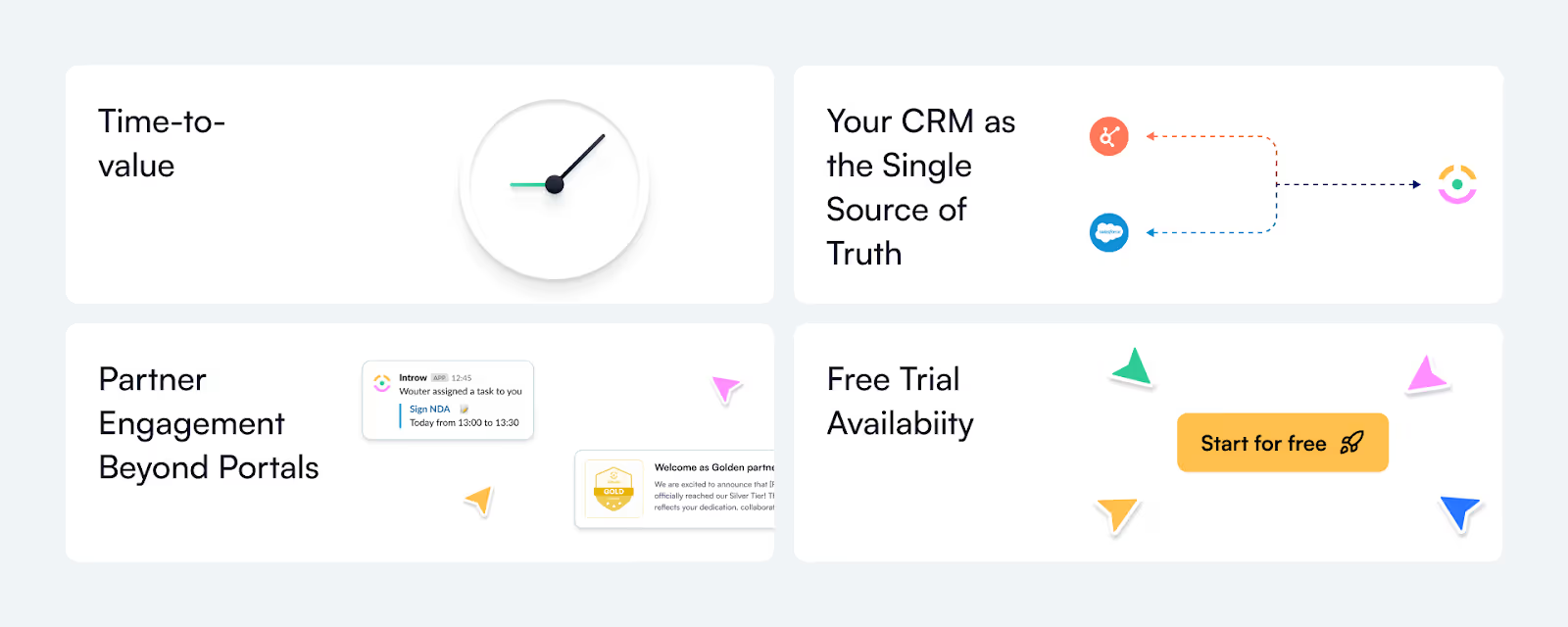
If you’re looking for a PRM solution that’s fast, easy, and actually built for modern partner relationships, Introw is a top choice. Here’s why:
- Fast Deployment – No need to wait months to get started.
- CRM-First Integration – Works seamlessly with your CRM platform.
- Designed for Engagement – Helps keep partners informed and active.
- Proven Track Record – Companies using Introw see higher partner adoption and sales growth.
Final Thoughts
A strong PRM platform isn’t just about ticking feature boxes — it’s about partner success, revenue growth, and streamlining business processes.
If you’re ready to scale your partner programs, drive more revenue, and improve partner engagement, investing in the right PRM system is a no-brainer.
Want to see how Introw can transform your partner programs? Request a demo or try it for free today!
FAQs about Choosing PRM
1. What is PRM, and how is it different from a CRM?
PRM (Partner Relationship Management) is software designed to help businesses manage partner programs, track partner sales, and optimize collaboration with channel partners, resellers, and affiliates. Unlike CRM software, which focuses on direct sales teams and customer relationships, a PRM system is built to support indirect sales channels by providing features like partner onboarding, deal registration, and performance tracking.
2. How do I choose the best PRM for my business?
When selecting a PRM platform, consider factors such as ease of implementation, CRM integration, automation features, and partner engagement tools. A good PRM solution should help you streamline business processes, reduce manual data entry, and improve partner collaboration. Look for features like 2-way CRM sync, marketing collateral management, and automated partner updates via Slack or email.
3. What are the key benefits of using a PRM solution?
A PRM system helps businesses manage partner relationships efficiently, leading to higher revenue growth, better sales performance, and improved customer satisfaction. Key benefits include:
- Automated partner onboarding – Get new partners up to speed quickly.
- Deal registration & lead tracking – Reduce conflicts and improve visibility.
- Performance management – Track partner success, revenue targets, and engagement metrics.
- Marketing & content sharing – Ensure partners have the necessary resources to sell effectively.
4. Why is Introw the best PRM solution in 2025?
Introw stands out as a modern PRM platform that prioritizes fast setup, seamless CRM integration, and partner engagement beyond the portal. Unlike traditional PRMs that require months of setup, Introw is ready to use in minutes. It also offers:
- 1-click CRM integration – Works effortlessly with HubSpot, Salesforce, and other CRM systems.
- Real-time analytics & reporting – Track partner performance and sales opportunities.
- Automated partner updates – Keep partners informed via Slack, email, or in-app notifications.
Latest articles
Introw PRM and Crossbeam integration
Looking to integrate account mapping data into your PRM? Introw leverages Crossbeam's overlap data to identify opportunities and share them with your partners instantly.
What is Crossbeam?
Crossbeam is a Partner Ecosystem Platform (PEP) that empowers SaaS companies to replace cumbersome spreadsheets with a streamlined system to identify overlapping customers and prospects in their partner networks. This approach is commonly known as "account mapping."
In simple: You connect your CRM, your partner connects their CRM. Crossbeam identifies overlapping data. Example: Your company has Acme Corp as a prospect, your integration partner has Acme Corp as a customer. Crossbeam will uncover this for you allowing you to ask for an introduction or intell about Acme Corp.
In 2024, Reveal and Crossbeam merged, creating a network that now connects over 30,000 companies, including Stripe, Intercom, HubSpot, and many others.

What is Introw?
Introw is an innovative Partner Relationship Management (PRM) platform designed to make managing partnerships easy, efficient, and impactful. It allows businesses to create and manage a partner portal in just minutes, with features like:
- Automated Deal and Lead Registration: Streamline workflows for registering and tracking deals all integrated with your CRM.
- Tiering and Commission Management: Automate partner tiers and commission payouts to encourage better engagement.
- Partner Enablement: Keep partners up to date and top of mind by giving them access to the right sales material and sending them announcements on autopilot.
- CRM Integration: Introw integrates seamlessly with platforms like Salesforce and HubSpot, keeping your CRM as the single source of truth.
- Real-Time Alerts and Nudges: Introw enables instant partner engagement via email and Slack, ensuring partners stay informed and motivated.
Unlike traditional PRMs, Introw starts from CRM data, and is set-up in literally minutes instead of months.
Why and How Does Introw Integrate with Crossbeam?
The integration between Introw and Crossbeam brings the best of both platforms together to enhance partnership collaboration and revenue potential. Here’s how it works:
- Seamless Connection: With just one click, Introw connects to Crossbeam, automatically matching your partners from both platforms.
- Streamlined Opportunity Sharing: Use Crossbeam's overlap data to identify opportunities and share them with your partners instantly through Introw.
- Automated Deal Attribution: Deals sourced through Crossbeam's overlap data are automatically attributed to the appropriate partner in your CRM.
- Real-Time Partner Engagement: Introw uses Slack and email to send timely updates on deal status or CRM changes, ensuring partners are always in the loop and engaged.
By combining Introw’s advanced partner management tools with Crossbeam’s powerful data-sharing capabilities, this integration creates a highly efficient system for driving partnership revenue and fostering collaboration.
Learn more and get started with the integration by creating an here.
Alternatively, schedule a 1:1 call to learn more through a personalized demo.
Introw becomes a HubSpot Certified App Partner 🏅
This milestone reinforces our mission: leveraging CRM-data as the single source of truth for partner collaboration.
Introw is helping over 1000 HubSpot users to launch a partner portal in minutes, all integrated with their CRM. This has resulted in an increased partner revenue & engagement for HubSpot customers (see Sandsiv case study).
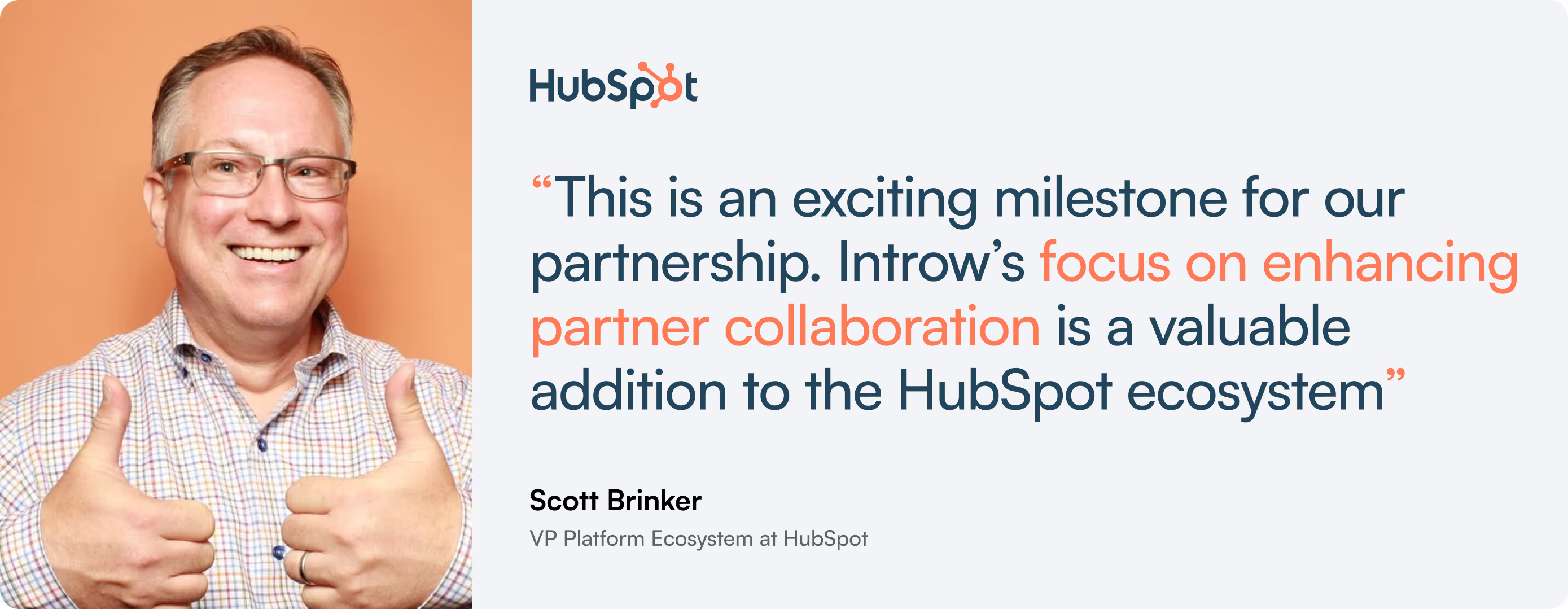
Benefits of the HubSpot Integration
Certified integrations reflect a strong investment in product quality and customer experience, ensuring users can unlock greater value from their HubSpot workflows. Partners can collaborate in real-time on deals and get real-time updates, while resellers can even manage their own deals without needing a HubSpot account.
🪄By connecting HubSpot to Introw, all partner data sitting in HubSpot will come to life in no-time:
- You'll be aligned with your partners by collaborating on deals in your partner portal. Comments are being pushed as notes in your HubSpot.
- You'l be able to sync partners from HubSpot directly to Introw
- You'll be able to push form submissions (become a partner, support request, lead form & deal form) directly to HubSpot.
- Add other dynamic CRM-views based on HubSpot objects to your shared space (contacts, companies, leads or tickets)
Next to this, Introw integrates with contacts, product, quotes and more in order to keep HubSpot as the single source of truth for data management.
Introw Copilot in HubSpot
The HubSpot Copilot enables the partnership, sales, and marketing teams to seamlessly collaborate with their B2B partners directly within their CRM. Watch this short video to see how the Copilot workflow operates.
Laurens Lavaert, CTO at Introw, adds, “HubSpot has been an exceptional partner. Achieving certification on their marketplace reinforces our dedication to helping businesses streamline partner collaboration. With Introw, nearly 1000 HubSpot users are already simplifying their partner collaboration, and we’re excited to help thousands more maximize their success.”
HubSpot’s App Partner Program continues to grow its ecosystem of top-tier integrations, offering users powerful tools to expand their reach and streamline their operations.
Connect HubSpot to Introw now
- Create an account via: https://rooms.introw.io/signup
- Connect your CRM
- See the magic in action 🪄
About Introw
Introw is a partner relationship platform (PRM) that lets you launch a personalized partner portal in minutes—fully integrated with HubSpot (& Salesforce). Whether you work with resellers, referral partners, distributors, or implementation partners, Introw streamlines collaboration and boosts engagement without the hassle of traditional portals.
Introw raises €1M to launch Digital Partnership Rooms
Introw raises €1M
The Ghent-based tech start-up Introw, already helping dozens of companies to unlock partnership sales, raises €1M to create "Digital Partnership Rooms"
Early-stage fund Pitchdrive leads the €1 million round in Introw, joined by vetted angels such as Pieterjan Bouten (Showpad), Ewout Meyns (Hubspot) & Dieter De Mesmaeker (DataCamp).
Young entrepreneurs Andreas Geamanu (CEO), Laurens Lavaert (CTO) and Simon Van Den Hende (AI Engineer) founded the company in early 2023 together with “Netlog-maffia” serial entrepreneurs Lorenz Bogaert, Toon Coppens, Nicolas Van Eenaeme and Vincent Verlee.
They are on a mission to make partnership collaboration easy by allowing partners to collaborate in shared spaces.
"There is only 25% adoption on current partner relationship management (PRM) solutions. With Introw partners don't need an account which results in up to 80% partner adoption," says co-founder Andreas Geamanu.

About the Challenge
The founders saw the challenges sales teams faced when trying to collaborate with B2B partners. Driven by these challenges, the founders set out to bridge the gap and forge a new path for B2B ecosystem sales.
”We saw a huge drive in the founders to solve a pain they had experienced personally. Combining the technical (AI) expertise with B2B sales expertise will be a magical potion that can lead to a huge shift in the way companies work with partners today” Wim Derkinderen at Pitchdrive.

With the help and expertise of these experienced angel investors and Pitchdrive, Introw will use this funding to convert warm leads into deals worldwide. Introw is onboarding new users every day.
Sign ups are open at introw.io
16 Deal Registration Software Platforms Your Partners Will Actually Use
What would change if every partner could register deals from email or Slack in seconds?
Most deal registration programs still rely on long forms, portal logins, and manual updates. That slows partners down and creates a duplicate pipeline and unclear ownership.
A modern deal registration process removes those steps, automates approvals, and keeps every deal stage in your CRM. When registering deals feels easy, partners submit earlier and stay aligned with your team.
You’ll learn
- what effective deal registration software looks like today,
- how to evaluate the essentials,
- and which platforms actually help partners register deals consistently.
So where does friction come from, and how does a better workflow protect partner trust and improve forecasting?
Why deal registration still breaks (and how to fix it)
Deal registration should be simple. Partners register deals, your team reviews them quickly, and everyone stays aligned.
Yet many deal registration programs still create friction. Partners hit access issues, approvals move slowly, and deal data becomes inconsistent.
Over time, this reduces partner trust and increases channel conflict across direct and indirect sales.
Deal registration process friction
Most deal registration failures come from three predictable blockers:
- Partner portals that require logins or too many steps.
- Deal submission forms that take too long to complete.
- Approval delays that leave partners without updates.
When the process feels heavy, partners default to emailing an AE instead of using the deal registration tool.
This leads to duplicate deal data, unclear ownership, and rising tension between channel partners and the direct sales team.
Channel managers then lose visibility into deal stages and partner behavior.
A common breakdown looks like this:
- A partner tries to register deals but cannot access the partner portal easily.
- The direct sales team enters the same customer manually.
- Conflicting records appear, and no one has a clean view of deal progress.
This cycle hurts partner relationships and weakens your partner program.
What good deal registration looks like
A strong deal registration program focuses on three essentials:
- Off-portal intake through email, Slack, or lightweight links.
- Instant confirmations tied to CRM deal stages.
- Clean, CRM-native deal data that updates in real time.
With these elements in place, partners register deals earlier and more consistently.
Clear rules reduce conflict when multiple partners work with the same customer. Automated updates keep partners informed without manual data entry. And real-time visibility across your sales pipeline helps both channel partners and internal channel managers stay aligned.
Here is how modern systems solve old problems:
Platforms that follow this model, including Introw’s deal and lead registration workflow, reduce friction by syncing every submission directly into the CRM and keeping partners informed automatically.
Why this matters for deal flow
Deal registration software works only when partners trust the experience.
When partners can register deals quickly, stay informed, and see consistent deal stages, they engage more. This leads to cleaner partner pipeline visibility, fewer disputes, and faster revenue cycles.
To evaluate which deal registration software delivers on this, the next section breaks down the core features every buyer should look for in 2026.
How to evaluate deal registration tools (buyer checklist)
Choosing deal registration software is easier when you know what actually drives partner adoption.
Most teams compare features, but in our experience, the real difference comes from how well the tool supports your partners day to day.
If the process feels simple, partners register deals more often, and your deal data stays clean inside Salesforce or HubSpot.

Start with partner experience
Partner experience is the biggest factor in deal registration success. If the process feels slow or confusing, partners will skip it and email someone on your direct sales team instead.
Strong tools make deal registration simple by offering:
- Fast intake through email, Slack, or a short deal submission form.
- Clear steps so partners know exactly how to register deals.
- Mobile-friendly options for partners who work on the go.
We see the best results when channel partners can register deals without touching a partner portal. It removes friction and improves partner trust from the start.
Set up a good deal registration module
A good deal registration module should help your business reduce channel conflict and keep deal progress visible across teams.
When tools automate the steps partners usually struggle with, your partner program becomes easier to run.
Look for:
- Automatic approvals based on time stamps, partner tier, or ownership rules.
- Real-time sync of deal stages inside your CRM.
- Clean deal data that does not require manual data entry.
These features keep your channel pipeline data accurate and give both partner managers and internal sales teams a single view of each opportunity.
Governance and scale as your partner program grows
As your partner program expands, you need structure. Different partner segments often need different experiences, and your internal teams need clear rules to avoid mix-ups.
We suggest checking for:
- Role-based access so partner managers and sales leadership see what they need.
- A reliable audit trail that tracks changes and partner behavior.
- Flexible segmentation for geos, partner tier, or product lines.
These guardrails help your business stay aligned as more partners register deals and your sales pipeline grows.
A quick way to compare tools
Why this checklist helps your business
A deal registration program only works when partners engage with it.
If you choose software that simplifies the process, your partners register deals earlier, your teams stay aligned, and you avoid the channel conflict that slows down revenue.
Now that you know what to look for, we can compare the deal registration tools that actually help partners register deals without friction.
The 17 best deal registration software platforms (2026)
We've put together our picks for solid deal registration tools that we see most often across SaaS partner programs.
Each one supports deal registration, but they solve different problems depending on your partner segments, tech stack, and channel strategy.
Use this section to match your program design to the right platform, not just the biggest brand.
1. Introw
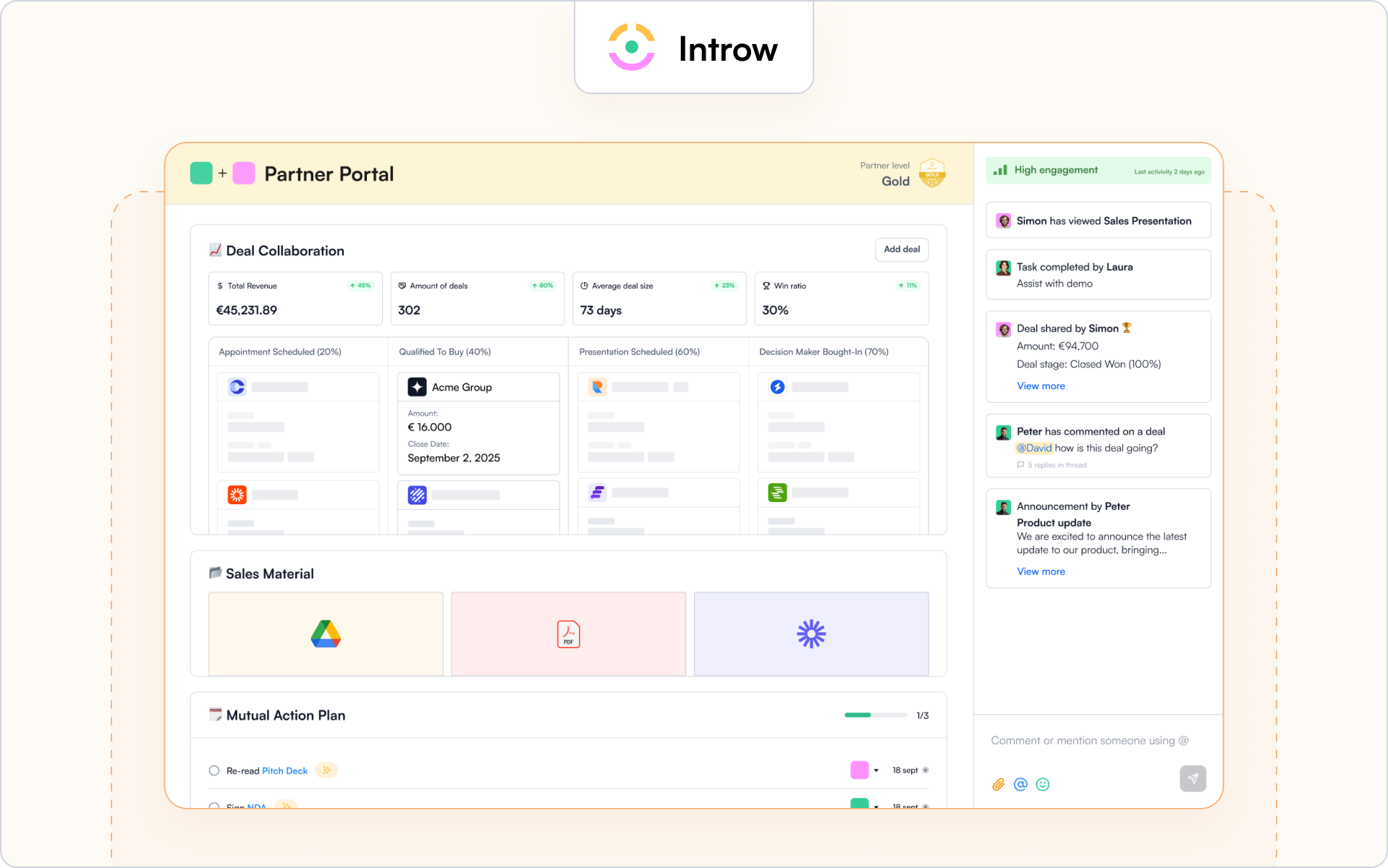
Introw is a CRM-native deal registration system that lets partners register deals from email, Slack, or lightweight links instead of a portal.
Who it’s for
B2B teams on Salesforce or HubSpot running referral, reseller, or co-sell motions with 20–300+ channel partners.
Why choose it
Partners register deals without logging in, while your teams work entirely from native CRM objects with real-time deal stages.
Standout capabilities
Off-portal intake, automated approvals, deal progress updates synced to Salesforce or HubSpot, and engagement analytics across the partner pipeline.
Keep in mind
Best if you want deal registration, partner engagement, and attribution in one CRM-first platform instead of a heavy portal.
Integrations/notes
Deep Salesforce and HubSpot integrations, Slack notifications, open API, and a focused deal registration module tied to clean pipeline data.
2. Impartner
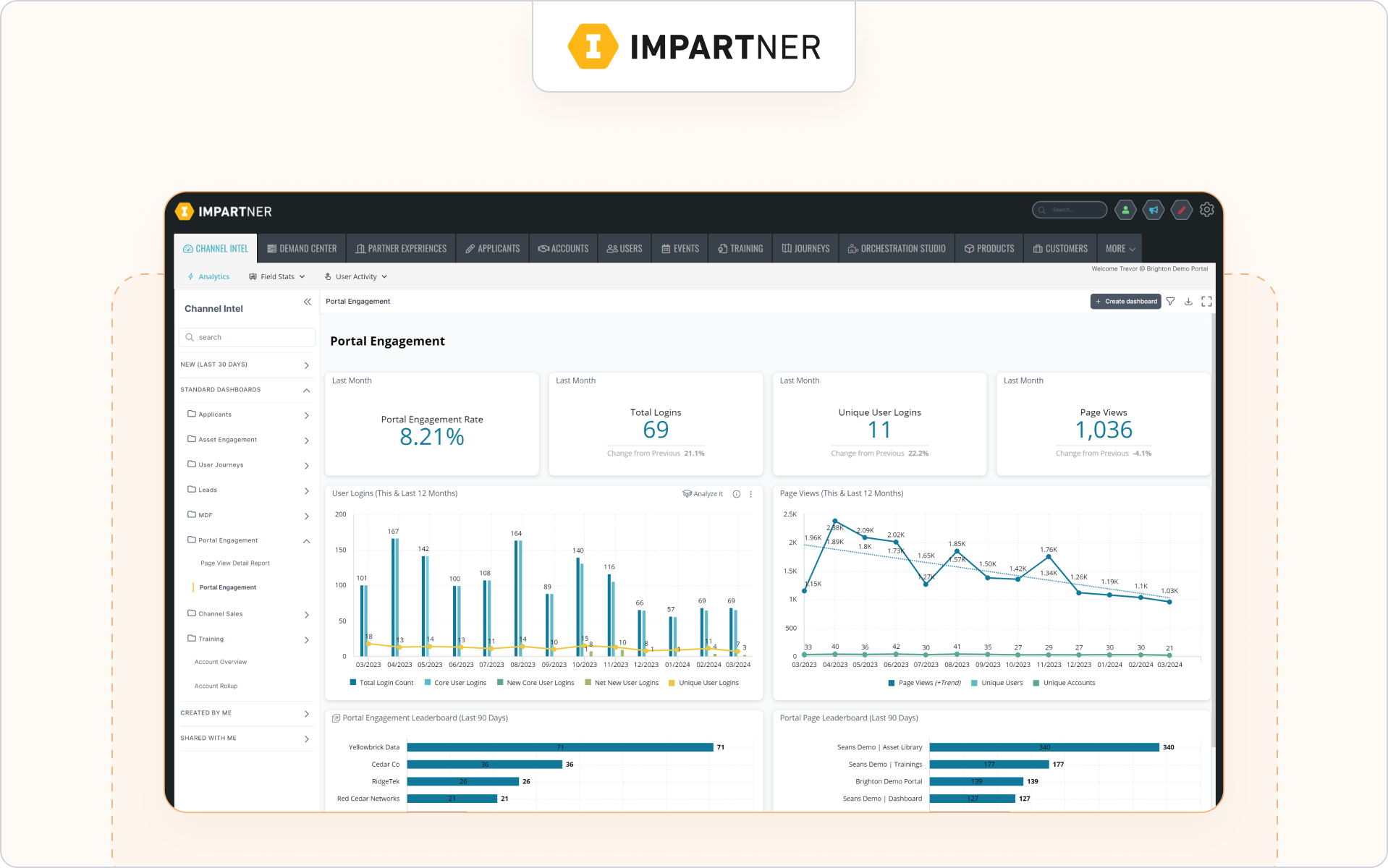
Impartner is a full PRM platform built for large channel programs with complex workflows.
Who it’s for
Global SaaS and technology companies with structured partner tiers and compliance needs.
Why choose it
Mature deal registration module, configurable approval logic, and strong governance for value-added resellers and distributors.
Standout capabilities
Tier rules, multi-step approvals, MDF, channel performance reporting, and tools to reduce channel conflict.
Keep in mind
Heavier setup; works best with dedicated channel managers and Salesforce-centric environments.
Integrations/notes
Strong CRM connectors, especially Salesforce, plus a wide ecosystem of partner marketing integrations.
3. Channelscaler (prev. Allbound)
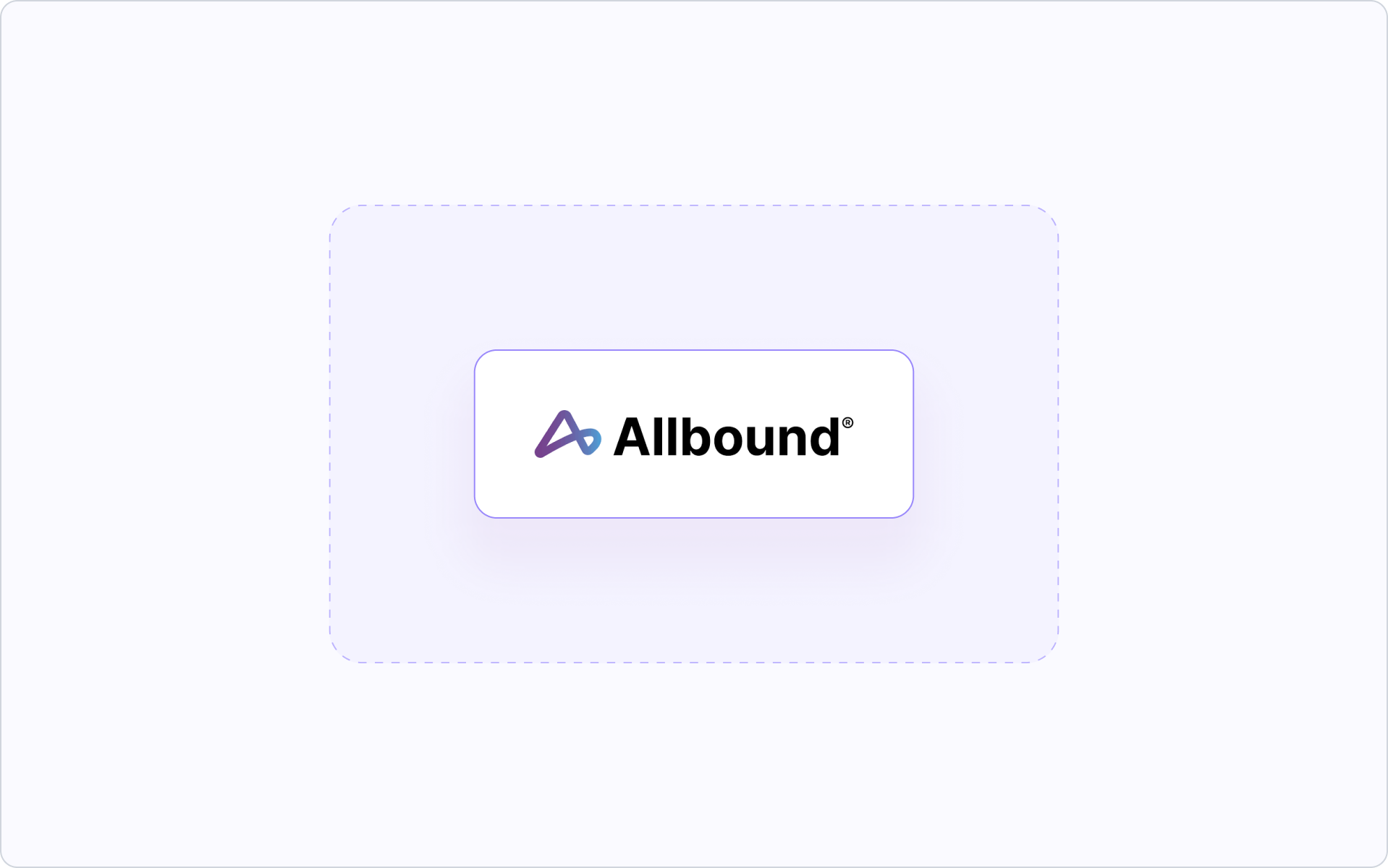
Channelscaler combines partner training, content, and deal registration in a single portal.
Who it’s for
Teams that care about partner enablement as much as partner pipeline.
Why choose it
Partners can access marketing materials, complete training, and register deals in one place.
Standout capabilities
Content hub, learning paths, QBR support, and MDF handling with a guided partner portal.
Keep in mind
Portal-first model, so plan how you will keep partners logging in consistently.
Integrations/notes
Integrates with major CRMs and common partner marketing tools.
4. Kiflo
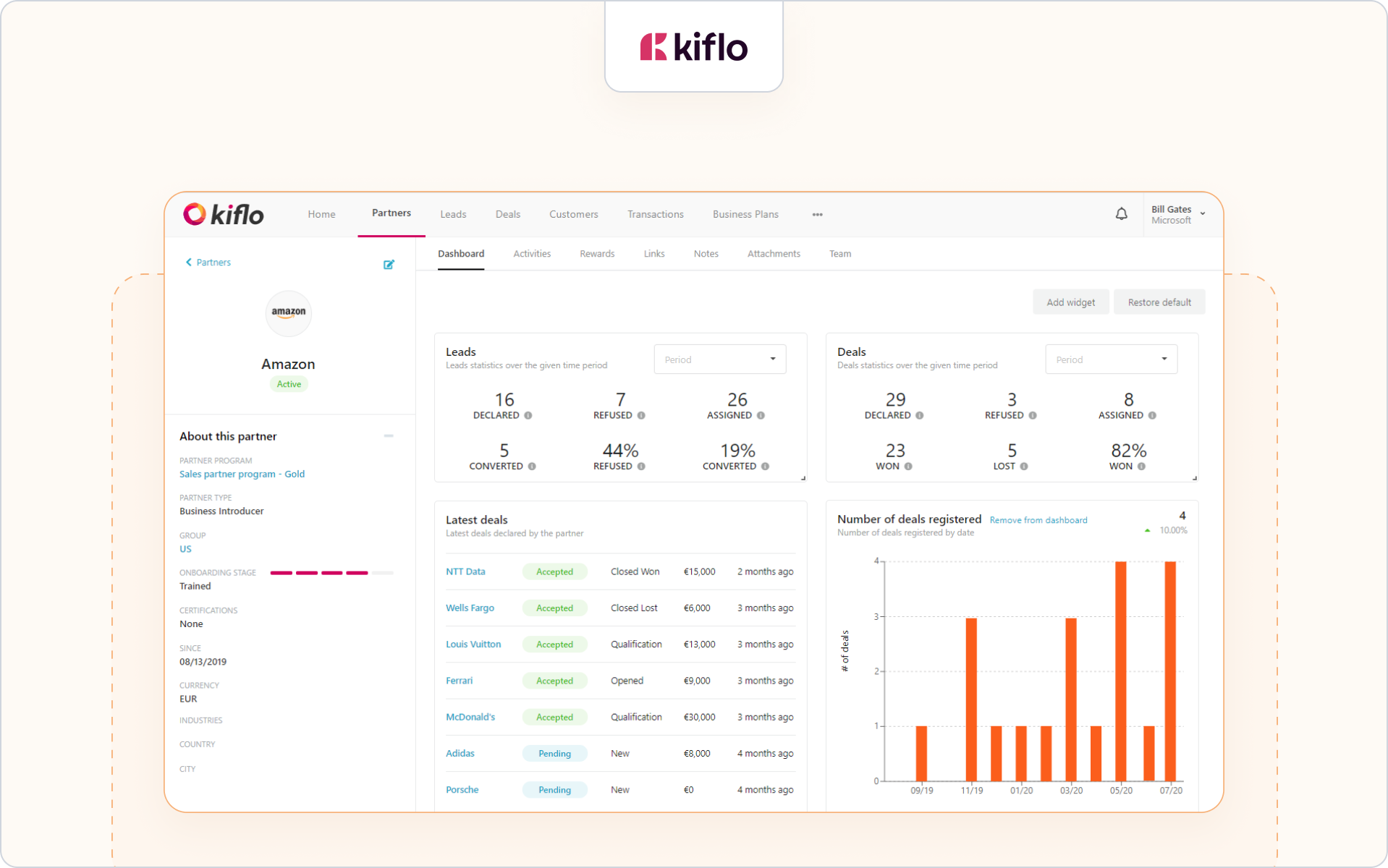
Kiflo is a simple, lightweight PRM with built-in deal registration for growing partner programs.
Who it’s for
SMB and mid-market SaaS companies launching a partner program for the first time.
Why choose it
Straightforward deal registration and onboarding without heavy admin.
Standout capabilities
Deal forms, partner onboarding, commission tracking, and basic partner performance reporting.
Keep in mind
Analytics and customization are lighter for complex global programs.
Integrations/notes
Connects with Salesforce, HubSpot, and common marketing tools.
5. Channeltivity
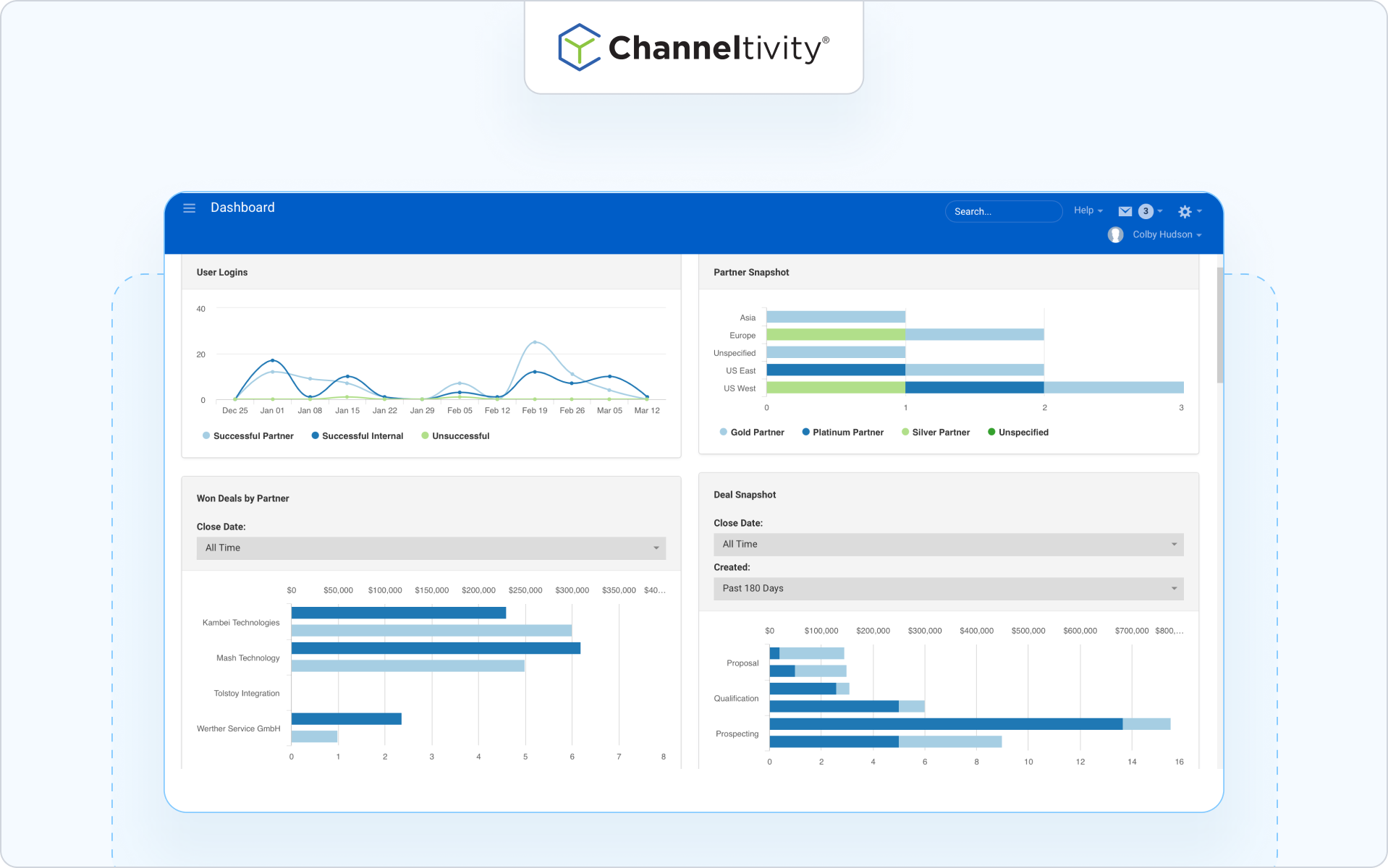
Channeltivity delivers structured deal registration and channel operations in a clean partner portal.
Who it’s for
Tech vendors that want predictable deal registration and partner management without enterprise overhead.
Why choose it
Reliable deal registration module with lead distribution and partner onboarding.
Standout capabilities
Deal forms, MDF, lead routing, referral management, and HubSpot integration.
Keep in mind
Off-portal submission is limited, so adoption relies on partner portal use.
Integrations/notes
Strong HubSpot integration with support for Salesforce.
6. Magentrix
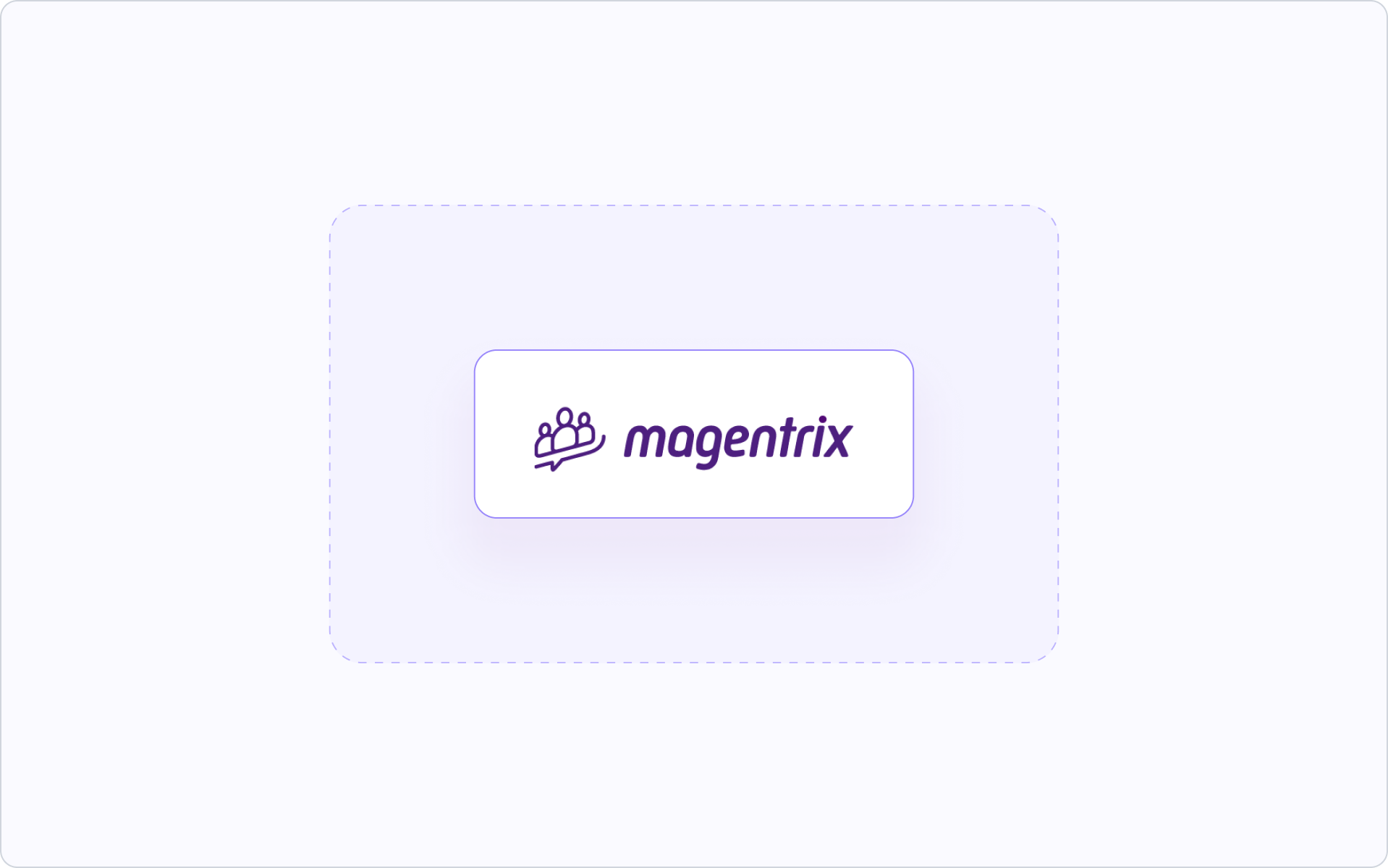
Magentrix is a customizable partner portal platform built on Salesforce Experience Cloud.
Who it’s for
Salesforce-centric companies that need branded partner experiences.
Why choose it
Lets you build custom partner portals with community features, content, and deal registration.
Standout capabilities
Flexible portal pages, permission controls, and strong Salesforce sync.
Keep in mind
Requires admin capacity to configure and maintain.
Integrations/notes
Deep Salesforce integration plus connectors for support and marketing tools.
7. ZINFI
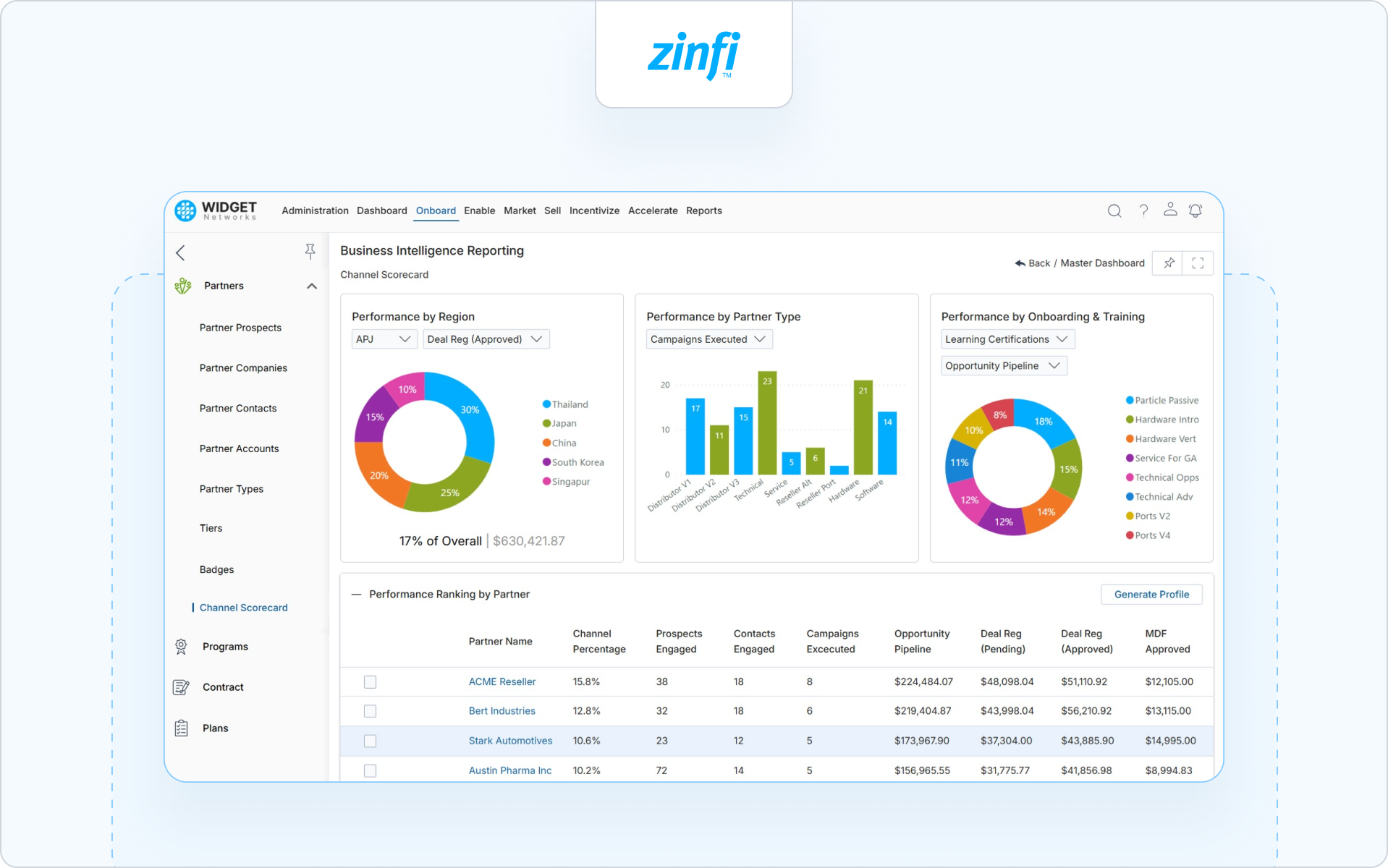
ZINFI supports large, complex channel programs that need detailed rules and compliance.
Who it’s for
Enterprises with many partner types, geos, and strict governance requirements.
Why choose it
Highly configurable approval rules and workflows for deal registration programs at scale.
Standout capabilities
Audit trails, rule engines, partner tiering, and multi-language support.
Keep in mind
Admin setup can be intensive; best for structured, mature channel programs.
Integrations/notes
CRM integrations plus connectors for channel marketing and data management.
8. WorkSpan

WorkSpan specializes in co-selling and alliances rather than classic PRM workflows.
Who it’s for
Vendors working with hyperscalers or cloud marketplaces on joint opportunities.
Why choose it
Shared opportunity records make co-sell deal stages clear across both organizations.
Standout capabilities
Joint pipeline, ecosystem account mapping, and influenced-versus-sourced reporting.
Keep in mind
Not a traditional deal registration portal; often used alongside other partner tools.
Integrations/notes
Salesforce, Microsoft Dynamics, and cloud marketplace ecosystems.
9. Unifyr (formerly Zift Solutions)
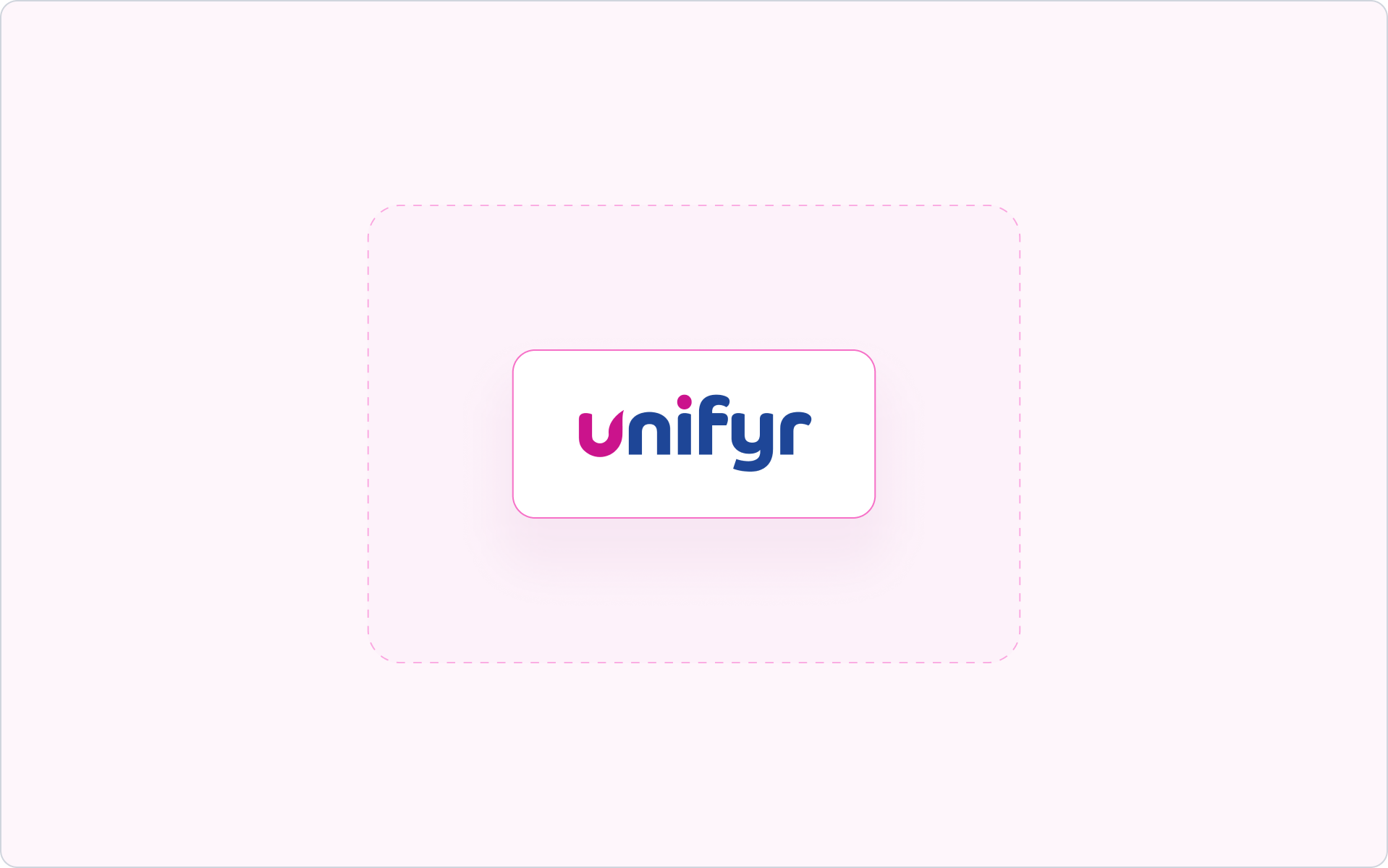
Unifyr is an all-in-one partner management platform that includes deal registration, partner marketing, and enablement.
Who it’s for
Established channel programs managing many partners, regions, and partner segments.
Why choose it
Combines deal registration, training, and channel marketing in one partner portal.
Standout capabilities
Through-channel marketing, certification paths, deal lifecycle tracking, and channel revenue reporting.
Keep in mind
Broad feature set; define which modules matter most so partners are not overwhelmed.
Integrations/notes
Connectors for Salesforce, HubSpot, and major marketing systems.
10. Computer Market Research (CMR)

CMR provides deal registration and compliance automation for traditional channel programs.
Who it’s for
Vendors managing distributors, resellers, or partners with strict governance requirements.
Why choose it
Strong multi-step approval logic and audit records for channel conflict management.
Standout capabilities
Deal registration module, ERP/CRM connectors, and tier-based workflows.
Keep in mind
UX leans traditional; training may be needed for partner adoption.
Integrations/notes
Supports major CRMs and ERPs used in hardware and distribution channels.
11. PartnerStack

PartnerStack mixes affiliate, referral, and reseller programs with simple lead and deal registration.
Who it’s for
SaaS companies working with many small partners across different partner segments.
Why choose it
Partners get one portal to find campaigns, register deals, and track rewards.
Standout capabilities
Marketplace, payout automation, onboarding flows, and basic deal registration.
Keep in mind
Not CRM-native; syncing tight pipeline data may require extra setup.
Integrations/notes
Billing, payment, and referral tools, with optional CRM integrations.
12. Kademi

Kademi focuses on partner enablement, incentives, and engagement, with deal registration included.
Who it’s for
Partner programs that rely heavily on motivation, gamification, and performance tracking.
Why choose it
Combines deal registration with incentives, certifications, and training.
Standout capabilities
Gamification, rewards, content libraries, and deal forms in one portal.
Keep in mind
Best suited for programs where partner loyalty is the main driver.
Integrations/notes
CRM and marketing tool integrations to support partner programs.
13. Partnerize
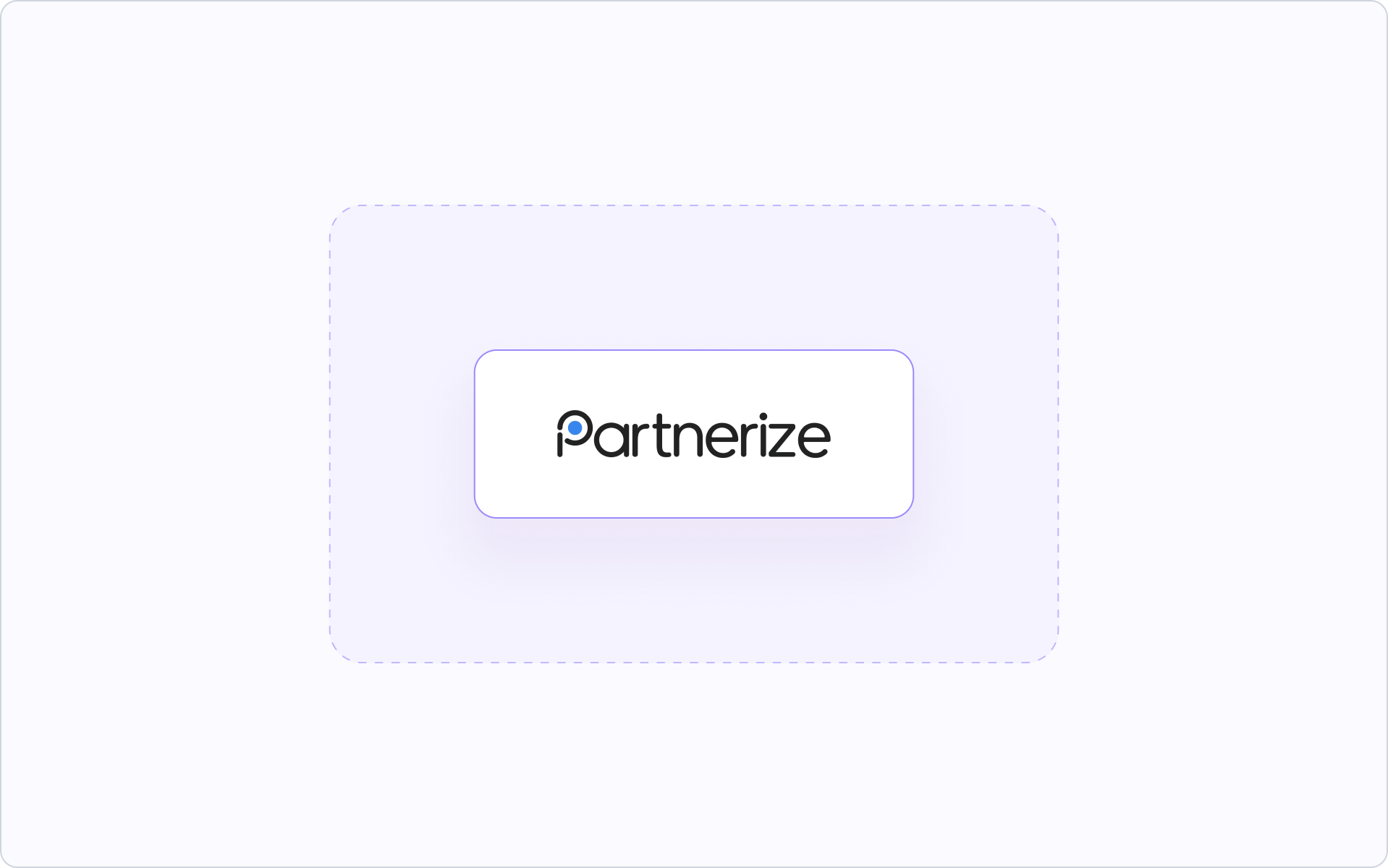
Partnerize supports partnership management across affiliates, influencers, and strategic partners.
Who it’s for
Enterprise brands with hybrid partner programs, including both performance and strategic partnerships.
Why choose it
Tracking, contracting, and attribution across many partner types, including deal-like flows.
Standout capabilities
Payments, performance reporting, partner discovery, and flexible contracting.
Keep in mind
Not built for classic B2B co-sell deal registration.
Integrations/notes
API-driven integrations for analytics, data warehouses, and performance platforms.
14. TUNE

TUNE is a customizable partner platform for app, mobile, and performance-driven programs.
Who it’s for
Mobile-focused vendors and performance teams that need flexible tracking.
Why choose it
Open APIs let teams design their own partner workflows, including light deal-style submissions.
Standout capabilities
Custom tracking, flexible partner types, and strong analytics.
Keep in mind
Not designed for B2B channel sales or structured deal registration.
Integrations/notes
API-first, integrates with mobile and ad-tech ecosystems.
15. Affise

Affise powers performance and affiliate programs with tracking, attribution, and partner management.
Who it’s for
Digital commerce vendors working with large performance networks.
Why choose it
High-scale partner tracking with optional lead or deal-style inputs.
Standout capabilities
Fraud protection, performance analytics, and flexible payout setups.
Keep in mind
Not a traditional channel sales platform; confirm fit for B2B deal registration needs.
Integrations/notes
Analytics, BI tools, and performance marketing platforms.
16. Salesforce PRM

Salesforce PRM extends Sales Cloud with partner portal and deal registration features.
Who it’s for
Companies standardized on Salesforce that want deal registration inside their CRM.
Why choose it
Partners register deals through a branded portal built on Experience Cloud with native Salesforce objects.
Standout capabilities
Partner portal, opportunity sharing, channel sales workflows, and training through Trailhead.
Keep in mind
Out-of-the-box UX is basic; usually needs admin support to fine-tune.
Integrations/notes
Deep Salesforce ecosystem integration, including Slack.
We know reviewing this many tools can feel overwhelming, but having a clear comparison helps you focus on what truly improves partner adoption and reduces friction.
The best way to narrow your list is to run a small, structured test.
So how do you compare platforms in a way that reflects real partner behavior?
Your 30-day deal registration software evaluation plan
A simple, structured test is the easiest way to see which deal registration software your partners will actually use.
In our experience, a short evaluation reveals far more than feature lists or demos. It shows how your channel partners register deals in real conditions, how clean your deal data stays, and which tool removes friction for your teams.
Week 1: shortlist and configure
Start with two or three options from your list. Set them up with the basics:
- Deal fields, partner segments, and approval rules
- Off-portal intake through email, Slack, or a lightweight form
- CRM sync for deal stages and ownership
This gives you a real view of how each deal registration tool fits your sales process.
Week 2: run a small partner pilot
Invite ten partners from different partner segments. Ask them to register deals the same way they usually would and watch what slows them down.
Measure:
- How fast partners register deals
- What questions they ask during the deal registration process
- How easily they stay informed as deal data updates in your CRM
This shows the difference between portal-heavy tools and software deal registration that partners enjoy using.
Week 3: evaluate performance
Focus on the signals that matter for channel programs:
- Submission time and approval speed
- Percent of accepted deals and clean deal stages
- Partner feedback on ease of use and partner satisfaction
These metrics show which platform improves partner pipeline visibility and reduces channel conflict across teams.
Week 4: choose your winner
Share your findings with sales leadership and internal channel managers. Here are the steps:
- Highlight what helped partners register deals faster,
- Look at where deal data stayed clean,
- and evaluate which deal registration software supported your channel partners without extra effort.
A fast path forward is to adopt the tool that reduces friction and improves forecasting.
Want to see how a CRM-first workflow feels in Salesforce or HubSpot? Request an Introw demo.
To understand how this plays out when partners register deals without hesitation, it helps to look at how Introw handles the entire flow.
Why SaaS teams pick Introw for deal registration
If you want partners to register deals consistently, keep deal data clean, and avoid channel conflict, the experience has to be simple.
Introw was built for that.
It meets partners where they already work, keeps your CRM as the single source of truth, and removes the manual work that slows teams down.
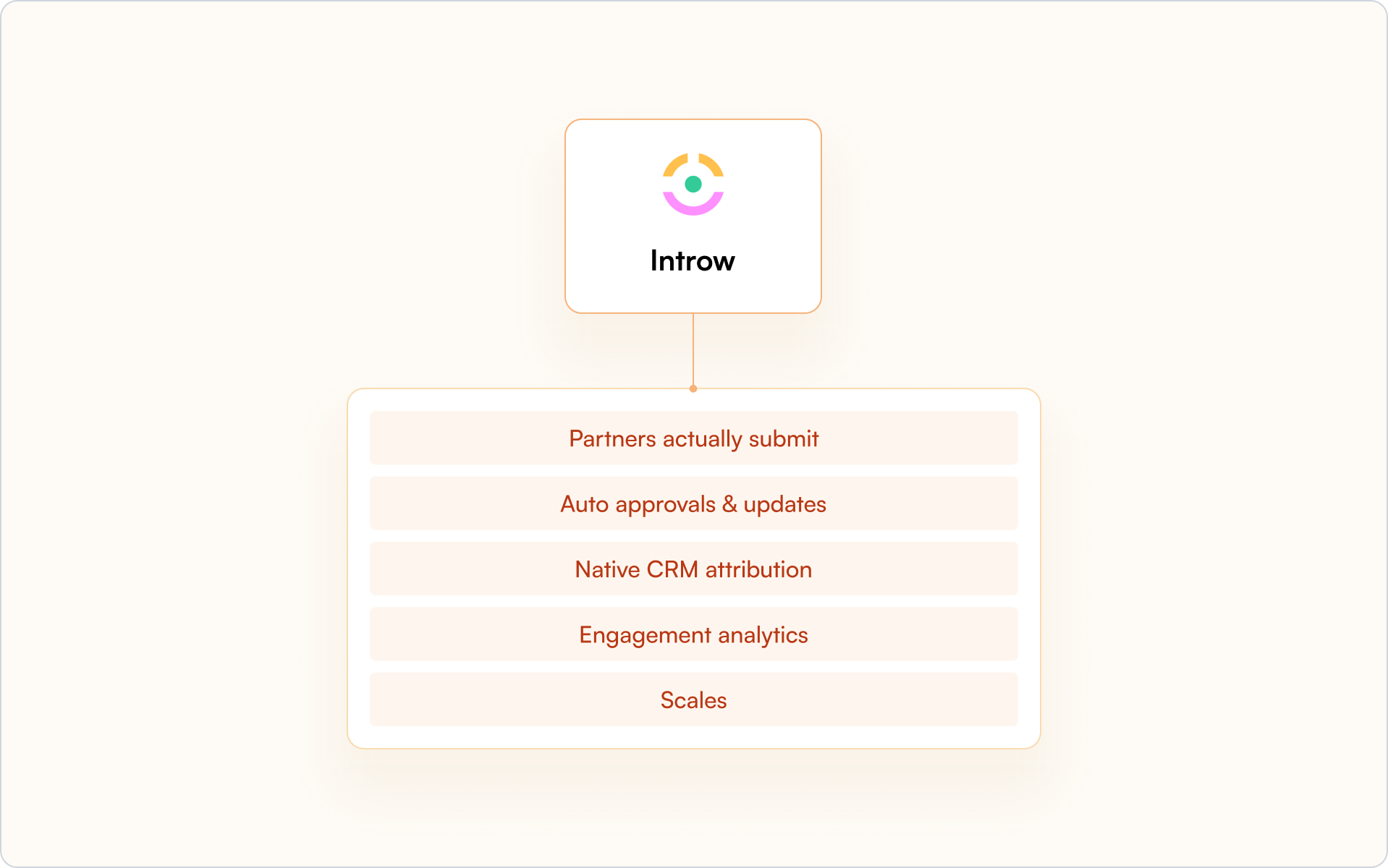
A quick look at how Introw compares
The results teams see with Introw
Introw is used in real partner programs that need reliable deal registration software. One example comes from SANDSIV, where moving away from spreadsheets to a CRM-first workflow created a measurable impact.
This lift came from reducing friction, improving partner satisfaction, and giving internal sales teams clear visibility into deal stages across different partner segments.
Your next steps
If you want your partner program to run with less friction and more consistency, here are three simple places to start:
- Audit your current deal registration process
Identify where partners get stuck, which steps require manual updates, and where deal data becomes unreliable in your CRM. - Test two or three tools with real partners
Even a small pilot shows which platform supports your channel partners and which ones create more work. - Compare CRM-native workflows
Look closely at how each tool handles deal stages, approvals, and pipeline visibility inside Salesforce or HubSpot.
Ready to see what a CRM-first, partner-friendly workflow looks like in practice? Schedule a short Introw session and request a demo today.
Partner Lead Registration: Capture Leads Without Logins in 2026
Great partner programs die on their first form. You want partners engaged, but the moment they hit a login wall, many stop. The good news: you can run partner lead registration without a portal login, keep data clean, and still resolve ownership fast. Below is a practical guide for teams that want more registered leads, fewer disputes, and a smoother sales process.
Why partner lead registration matters now
As your partner ecosystem grows, multiple partners find the same end customer, sales reps ask “who owns this account,” and leadership needs pipeline visibility. Lead registration (capturing a partner-sourced prospect early) protects the partner’s effort, reduces channel conflict, and lets you assign leads to the right team fast. It also creates a trail you can trust for commission payments and co-sell attribution.
When you make registration lightweight and fair, partners stay engaged, your sales team sees context, and operations keep a single source of truth for registered leads and registered deal records.
What “partner lead registration” is (and how it differs from deal registration)
Think of lead registration as the earliest claim: the partner flags a prospect with enough data for you to review and accept or decline. Deal registration comes later, once there’s a qualified opportunity with stage, amount, and next steps. Both fit inside modern partner programs, but they serve different moments:
- Lead registration: fast intake to assign leads, mark a cooling-off period, and prevent multiple partners from colliding on the same company.
- Deal registration: deeper validation to approve an existing deal with co-sell motions, attached resources, and clear SLAs.
Successful programs use both. Start with easy lead registration to capture more top-of-funnel, then elevate to deal reg when real pipeline appears.
The no-portal approach: five simple ways to capture partner leads
Logins are the biggest drop-off point. You can capture leads without a portal login and still keep control.
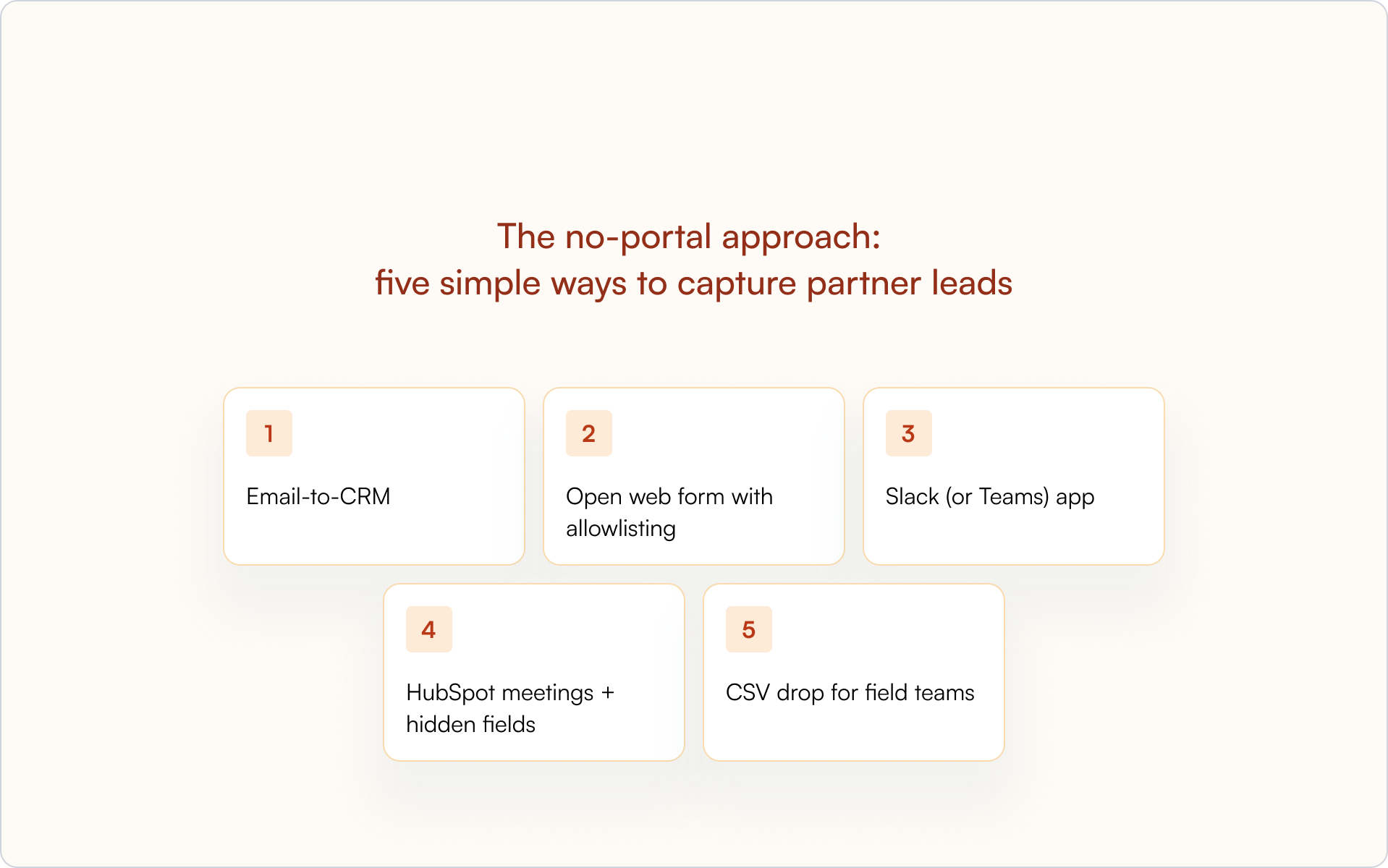
- Email-to-CRM
Give partners a single address (for example, partners@yourcompany.com). When they send a short “registration form” by email (company name, contact, problem, consent), an automated flow parses the message, creates the record, and returns a case number and status.
- Open web form with allowlisting
Host a short registration form that’s public but gated by reCAPTCHA and a partner email domain check. Submissions create a lead and kick off validation, while approved third parties (your partners) get instant confirmation and a “pending” badge.
- Slack (or Teams) app
If you co-sell in shared channels, let partners use a “/register” slash command. The bot collects company, contact, use case, and creates the registered deal or lead in your system, then posts back the record link.
- HubSpot meetings + hidden fields
For HubSpot partner lead registration, use a short form attached to a partner-facing “Book a discovery” page. Hidden fields tag partner ID and program. When the form is submitted, HubSpot creates the contact, company, and a deal stub, and your workflow moves it to “Submitted for review.”
- CSV drop for field teams
Some service partners prefer bulk. A controlled CSV upload (fields validated on import) lets them register a new deal list weekly. Your system dedupes by domain and company name, flags conflicts, and returns approved/declined with reasons.
All five methods can feed the same backend rules, the same partner portal views, and the same commission plan. The difference is friction: partners can register from wherever they already work.
Design a registration form partners will actually complete
Keep it under a minute. These fields usually give you enough to decide:
- Company name and domain
- Primary contact: name, email, role
- Opportunity context: problem, solution fit, services needed
- Stage guess: new intro, discovery scheduled, evaluation
- Partner: who is submitting, plus reseller or referral type
- Consent: partner confirms the prospect agrees to be contacted
Optional, when needed: geography, target revenue, product interest, and competing vendors.
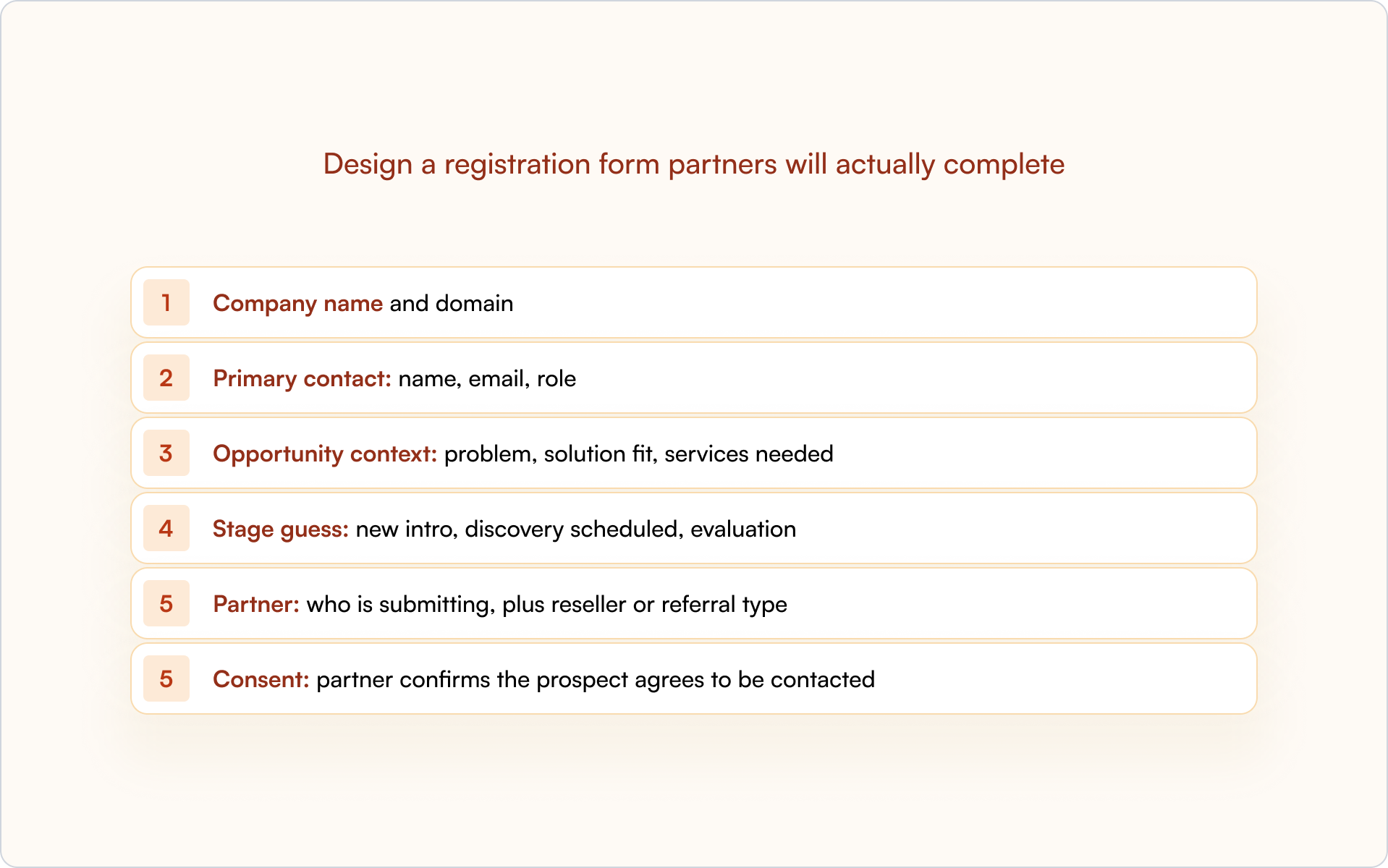
Make validation fair: from “submitted” to “approved” without drama
A good lead reg process balances speed and fairness. Publish the rules, enforce them consistently, and give partners a clean status they can see.
- SLA: respond inside two business days.
- Checks: duplicate by domain, existing deal check, territory rules, blocked accounts.
- Results: approved (with hold window), ask for more info, or declined (with reason).
- Hold window: 60–90 days of protection when partners complete the next step (for example, first meeting or intro email logged).
- Channel conflict: if two partners submit the same prospect, the one who got the first meeting within the window wins, or you split by segment/solution if that’s your policy.
Introw codifies these rules so operations doesn’t have to referee edge cases every week.
Map it to your CRM: HubSpot and Salesforce without side spreadsheets
Whether you run Salesforce or HubSpot, treat partner lead registration like any other intake you want to automate and audit.
- Objects: create a “Partner Registration” object or use a custom property set on Deals to track registration, status, partner, and window end date.
- De-dupe: auto-link to Company by domain; show “existing deal” if one is open.
- Workflows:
- Submitted → Validation queue → Approved/Declined
- Approved → Notify AE/partner → Start sales process tasks
- First meeting scheduled → Lock or extend hold window
- Dashboards: real time dashboards for operations and partner managers: pending, aging, approvals, meeting rates, win rates.
For HubSpot partner lead registration, keep your registration form in HubSpot, route through workflows, and surface status to partners via automated emails or a lightweight shared page. On Salesforce, mirror the same flow with Process Builder or Flow.
Incentives and SLAs that keep partners engaged (without overpaying)
You don’t need to pay for every submission. Reward progress, not spam.
- Tiered incentives: small flat fee when the first meeting is completed, larger percentage on new customers won, and accelerators for high margin products.
- Partner tier alignment: higher tiers may get faster response, priority support, or co-sell resources.
- SLAs: you respond within two days; the partner books a meeting within 14 days; your rep updates next steps after every call. Clear, mutual commitments build trust.
Seven metrics that prove the system works
Leaders care about outcomes. Measure what moves revenue and reduces friction.
- Registration-to-meeting rate within 14 days
- Approval rate by partner and segment
- Conflicts avoided vs. unresolved disputes
- Win rate and sales volume on approved registrations
- Time to first response and time to approval
- Active protection windows by region and product
- Commission payments accuracy and cycle time
When the numbers are visible, you can adjust commission structures, spot partner behavior trends, and focus enablement where it helps most.
A 30-day rollout you can actually ship
You don’t need a massive project to modernize lead reg. Keep it tight and iterative.

- Week 1: Write your acceptance rules, conflict policy, and hold window. Draft the short form.
- Week 2: Build the flow in your CRM. Stand up email-to-CRM and a public form. Test dedupe and routing.
- Week 3: Pilot with 10 partners across motions (referral, services, reseller). Meet twice, gather feedback, refine fields and emails.
- Week 4: Launch. Publish the rules and FAQs in your partner portal, start weekly status summaries, and open a short appeal path.
Where Introw fits
Introw is built to remove friction from partner lead registration and deal registration alike:
- No-login capture: partners register via email, a shared page, or Slack; Introw creates the record and sends status.
- Smart validation: automatic dedupe, account checks, and clear status transitions from submitted to approved to won.
- CRM-first: bi-directional sync with Salesforce or HubSpot, so ops and reps work in systems they already know.
- Visibility: partners see progress and next steps without asking you to “check the portal.”
- Payments: clean attribution makes commission management straightforward and commission payments timely.

If you’re ready to move beyond “please log in and fill this long form,” Introw gives you a lightweight, auditable path to more revenue and fewer headaches.
Ready to simplify partner lead registration?
If you want partners engaged, fewer conflicts, and clean data, make registration effortless and visible. Introw lets you capture leads without logins, validate fairly, and sync everything to your CRM so your sales team and partners can focus on winning. Request a demo and see how it works in your environment.
Partner Content Enablement Guide (That Actually Reaches Your Partners in 2026)
If you have ever asked what is content enablement, think of it as the connective tissue between creating content and closing deals. It is the discipline of organizing, delivering, and measuring sales enablement materials so sellers and partners can move prospective customers through the sales funnel with less friction. In a partner context, content enablement meaning widens: you are equipping external channel partners with up to date partner content and giving your internal sales team visibility into how it was used before a purchase order shows up.
Why is this urgent in 2026? Creation points keep multiplying. Marketing teams ship pages, playbooks, and videos. Sales reps record custom demos. Product managers publish technical specifications and security FAQs. Without a content enablement strategy, valuable content scatters across drives and chat threads. Partners guess which version is current, legal fees rise because brand risk slips through, and sales cycles drag while people hunt for the right slide. A thoughtful partner enablement strategy fixes this by aligning business content to buyer engagement and making it simple for partners to find, send, and track.
The old way versus the new way of enabling partners
It helps to name the shift so your partner program knows what will change and why.
Old way, hard to scale
- Content lives in disparate workflow tools and inboxes.
- A heavy partner portal is the only door and logins go stale.
- Marketing and sales collateral is uploaded once and forgotten.
- Success is counted as downloads, not meetings or revenue.
- No one can answer how much revenue a specific asset helped create.
New way, built for adoption
- A centralized repository controls versions and permissions.
- Distribution happens where partners already work: email and Slack.
- Sales enablement tools and digital asset management talk to each other.
- Measurement ties sales content to meetings, stage progression, and closed won.
- Introw adds intelligent content enablement so assets route by role, tier, and industry, and partners engaged can act without extra logins.
The new way respects how sales partners actually sell and how marketing teams want to manage brand consistency.
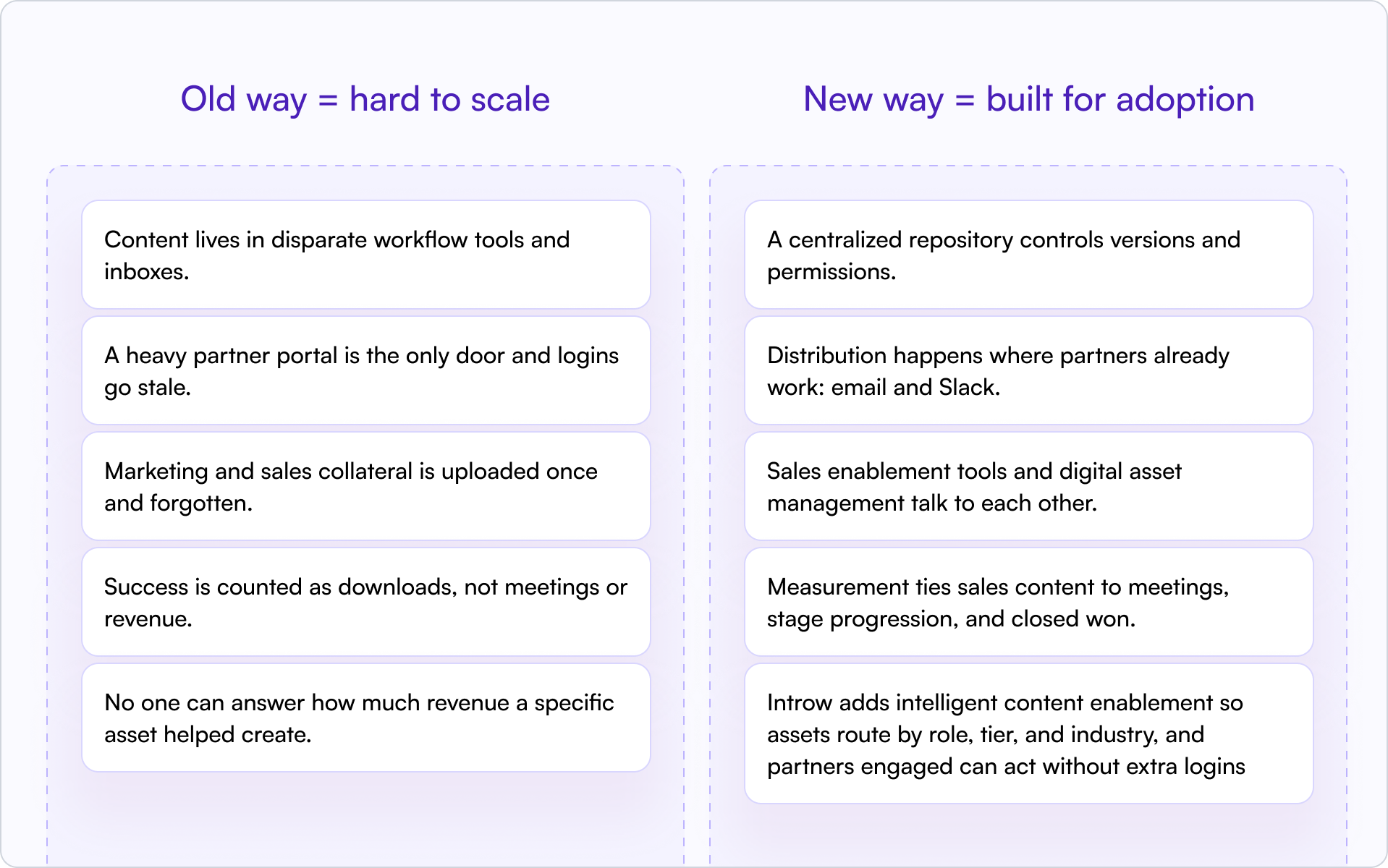
The expanded definition: content enablement for partner ecosystems
Let’s expand the definition so you can design an effective partner enablement strategy that fits a modern partner ecosystem.
- Content strategy maps formats to customer personas, objections, and stages. This is where value propositions are clarified and marketing materials are prioritized.
- Content management ensures managing content is safe and simple. Digital asset management, access controls, and data security keep everything current and compliant.
- Distribution puts partner enablement content into the flow of work. Think push delivery for urgency and a partner content hub for browsing and training.
- Measurement connects actions to outcomes. Key performance indicators live in your CRM and show what content actually shortens the sales cycle and improves sales performance.
- Ongoing support keeps partners engaged. Sales training, partner enablement training, and office hours help partners apply the message on real sales calls.
- Enablement tools automate the boring parts. Sales AI tools can flag stale claims, suggest next best content, apply AI powered spell checking to drafts, and even trigger document generation for localized one pagers.
This expanded definition turns a pile of files into a repeatable system.

The formats partners actually use — and why they work
You do not need hundreds of assets to support channel partners. You need a tight core mapped to the buyer journey, plus a plan to keep it up to date. Here is a practical short list that consistently moves deals:
- ICP one pager that captures pains, triggers, and crisp value propositions for your target audience.
- Short case studies with outcomes, named roles, and a quote you can reuse.
- Competitive snapshots with three differentiators and traps to avoid.
- Security and privacy FAQ that answers procurement’s first questions and reduces back-and-forth.
- Demo storyboard and 90-second talk track that link features to jobs-to-be-done.
- Pricing guidance that explains models without revealing internal margins.
- Co-marketing kit with a landing page outline, two emails, and three social posts that partners can localize.
- Implementation checklist for services partners, including technical specifications and boundaries.
- Onboarding guide that sets expectations for handoff and adoption.
- Marketplace companion if you transact through AWS Marketplace or Google Cloud Marketplace.
Each item should show an owner, a version date, and a stage. That simple metadata is how sales and marketing teams keep confidence high.
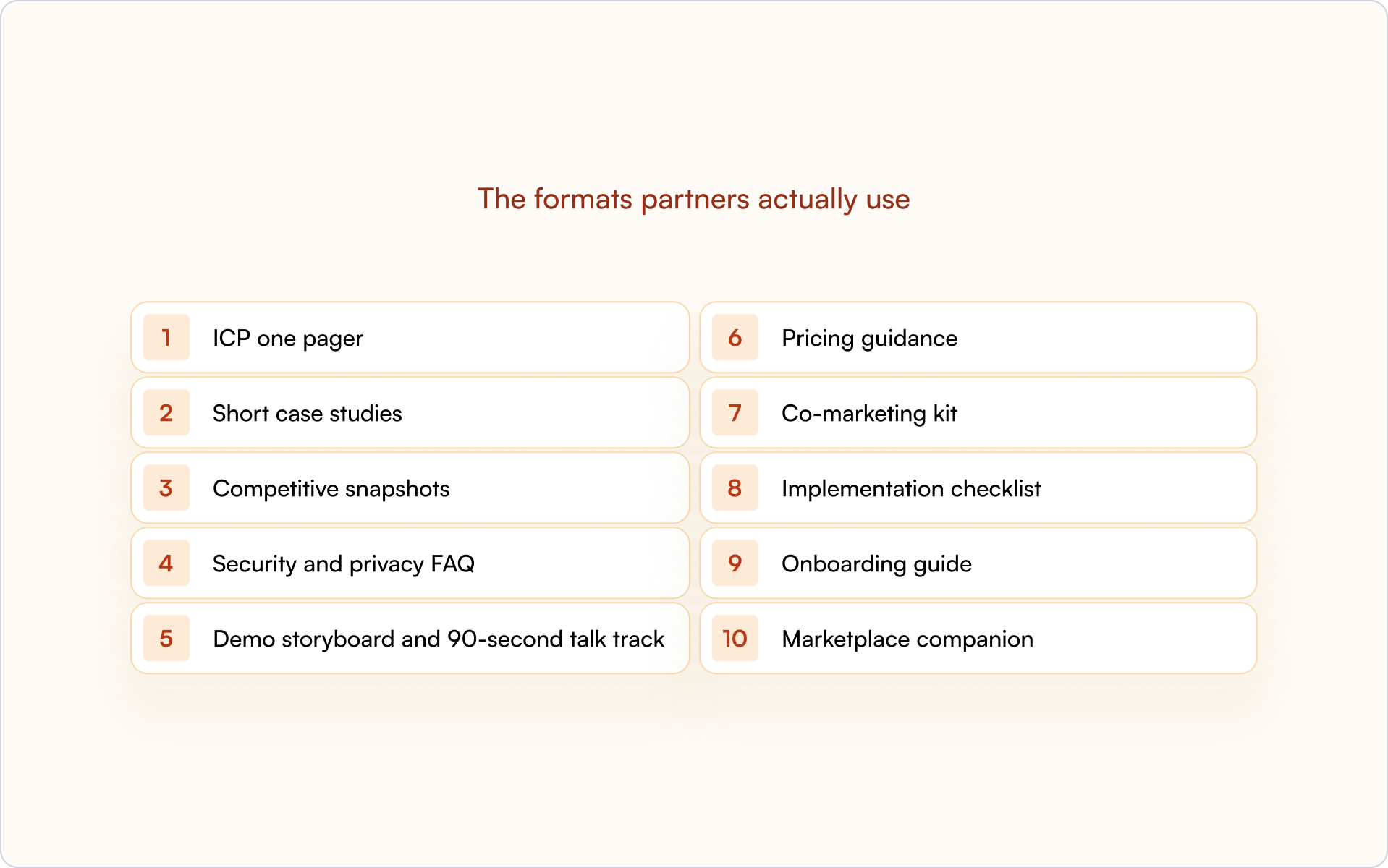
Building your partner content engine in five steps
Every step here flows into the next, so avoid skipping ahead. You are building a system, not just uploading files.
Step 1. Align on audiences, motions, and use cases
Start with segmentation. Split your partner ecosystem by motion — resell, referral, ISV, and services. Within each motion, separate sellers and consultants, then overlay partner tier and region. This gives you the targeting you need so a consultant does not receive first-call decks, and a reseller AE is not reading deep implementation playbooks.
Outcome: clear audiences for content and reporting, fewer irrelevant pings, better partner satisfaction.
Step 2. Audit existing content with ruthless clarity
Map every asset to discovery, evaluation, selection, or onboarding. Identify duplicates and outdated claims. Keep winners, merge near-duplicates, and retire risky files. Capture gaps that stall deals, like an absent security FAQ or a weak competitive snapshot. This is where content related technologies help: a digital asset management tool will expose duplicates, and enablement tools will surface low-use files to replace.
Outcome: a trimmed library that your internal team trusts and partners will actually reuse.
Step 3. Create the minimum viable set and standardize quality
Create marketing and sales collateral with a shared checklist: audience, use case, stage, owner, review cadence, legal status. Use standardized templates to speed document generation and maintain brand consistency. Where possible, add short narration guidance so sales reps know when and how to use the asset during sales calls.
Outcome: fewer, sharper pieces that are easier to keep up to date and safer to send.
Step 4. Distribute in the flow of work, not just the portal
A partner portal is useful, but it should not be the only door. Push content by email and Slack when timing matters. Let partners browse a partner content hub for training and self-serve discovery. Surface the next best asset inside your CRM when a sales rep opens an opportunity. Distribution should feel like today’s digital HQ, not a scavenger hunt.
Outcome: higher adoption, faster response, and less time spent hunting links.
Step 5. Measure what leaders care about and iterate quarterly
Replace vanity metrics with outcome metrics. Track first meetings within 14 days of send, stage progression on opportunities that received specific assets, influenced pipeline, and win rate deltas where content was used. Add operational KPIs like training completion and asset freshness. Review quarterly with partners and your internal sales team, then tune your content enablement strategy.
Outcome: proof that content moves revenue, not just downloads.

Where Introw fits — intelligent content enablement that partners adopt
Introw is built to make partner content reach the field and show up in your numbers.
- Segment once, deliver everywhere. Target by motion, tier, role, industry, certification status, or region. A reseller AE gets first-call assets and a co-marketing kit. A services architect sees implementation plays and product training.
- Push and pull distribution. Send content by email and Slack for urgency, while a lightweight partner content hub supports discovery and training. Partners do not need to learn a heavy system to stay current.
- CRM-first analytics. Engagement rolls up next to account and opportunity records so leaders can see which assets improve first-meeting rate, stage progression, and close won.
- Single source of truth. A centralized repository handles managing content, permissions, and data security. Owners and review cadences keep everything up to date.
- Assistive creation. Sales AI tools inside the workflow suggest next best content, flag stale messages, apply AI powered spell checking, and trigger document generation for localized one pagers.
This is partner content marketing that respects how partners sell and how marketing and sales teams want to measure.
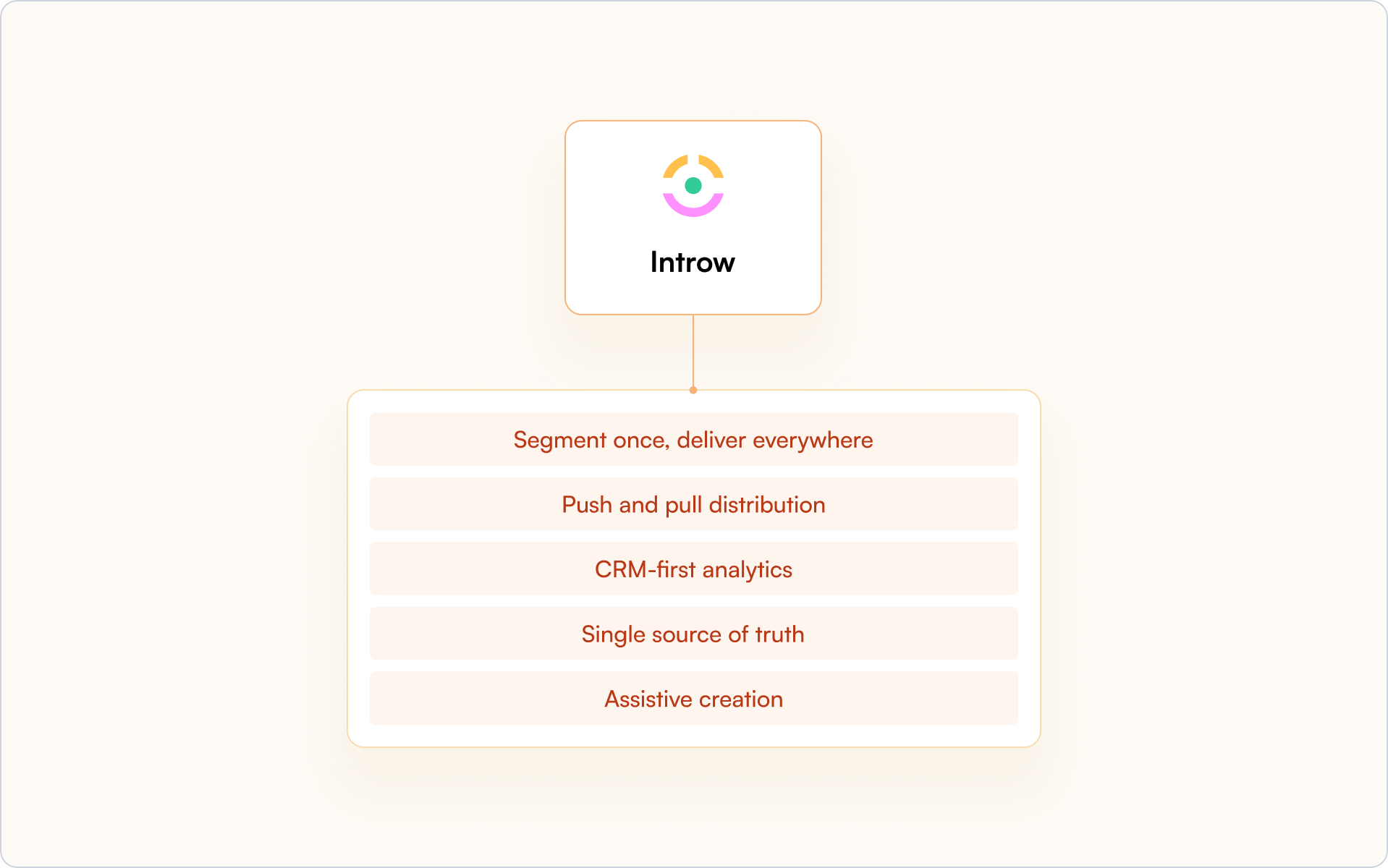
A 90-day rollout plan that respects day jobs
Long rollouts lose momentum. This plan gets you live fast and gives you space to improve.
Weeks 1–2 — pick two motions and two roles, define KPIs, align owners.
Weeks 3–4 — audit, trim, and draft the core set with standardized templates.
Weeks 5–6 — stand up the centralized repository, permissions, and CRM tracking.
Weeks 7–8 — pilot with a small partner cohort, run one live enablement session, collect feedback.
Weeks 9–10 — tune assets, set review cadences, finalize distribution rules.
Weeks 11–12 — publish the playbook in the partner content hub, expand targeting, and schedule the next co-marketing kit.
Because Introw connects segmentation, delivery, and analytics to your CRM, most of the wiring is configuration rather than custom work.
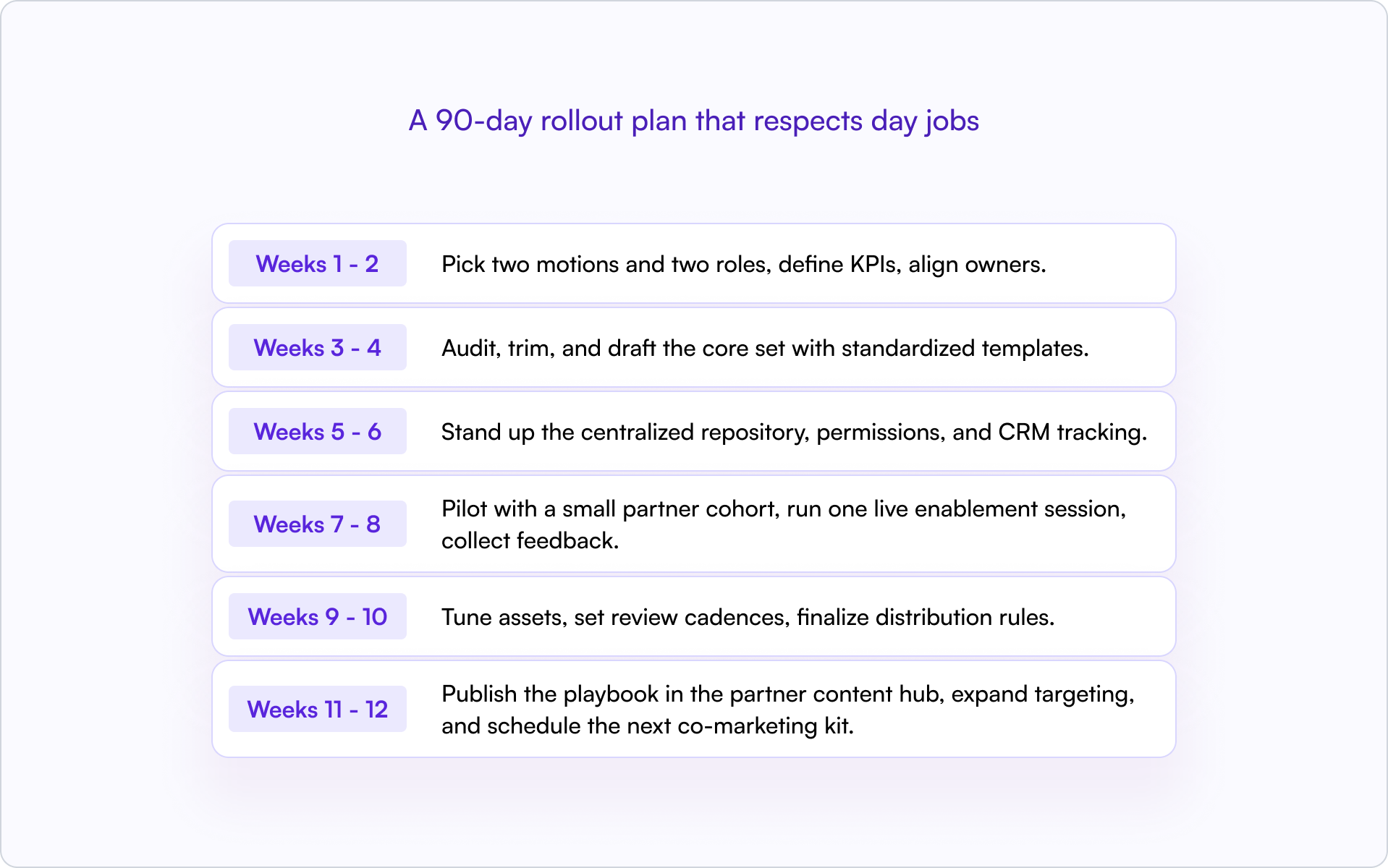
Bringing it all together
Great partner enablement is not about more files. It is about delivering relevant marketing content to the right people at the right time and proving it helped close business. When sales and marketing teams share a centralized repository, when content management is tight, and when distribution meets partners where they already work, buyer engagement improves and closing deals gets easier.
Introw adds the missing glue by combining segmentation, a partner content hub, push delivery, and CRM analytics so your channel partner enablement program turns content into revenue. If you want an effective partner enablement strategy that partners adopt and leaders can measure, Introw is ready to help.
Top 15 Impact Alternatives for Effective Partner Management in 2026
Impact is a partnership management platform designed primarily for affiliate, influencer, and performance marketing programs.
It can be a handy tool if your business relies heavily on affiliates and influencers to generate sales.
However, if your partner program is broader in scope – perhaps your strategy is more channel-focused, for example – you’ll benefit from a more comprehensive partner relationship management (PRM) platform.
Ready to kick your partner management up a gear this year? Read on for our 15 top Impact.com alternatives in 2026.
Why Consider an Impact Alternative in 2026?
An end-to-end performance marketing tool, Impact excels at affiliate and influencer programs because that’s what it’s designed for.
However, there are four major areas in which SaaS outstrips this online platform.

1. Limited CRM-Native Channel Workflows
Modern SaaS platforms like Introw work on top of your CRM, enabling seamless logging, tracking, and reporting directly inside Salesforce or HubSpot.
This deep embedding provides sales teams and all their partners with real-time visibility, eliminating the need to switch platforms.
However, Impact is browser and app-based, and requires teams and their partners to operate largely outside the CRM, which can create friction in channel workflows.
2. Deal Registration & Co-sell Motions Vs Affiliate Tracking
While Impact is certainly strong on affiliate tracking and commission management, it doesn’t fully support deal registration and co-sell motions.
Affiliate link tracking is primarily focused on click attribution, but SaaS functionality goes deeper, enabling joint selling motions, more meaningful collaboration, and improved pipeline visibility.
Indeed, try out a modern SaaS platform and you’ll generally find a structured deal registration pipeline, where partners can submit opportunities, collaborate with sales teams, and track progress through the funnel.
3. Off-portal engagement
Impact relies heavily on its portal for communication with partners.
In contrast, modern SaaS solutions meet partners where they already work – for example, email, Slack, or other collaboration tools.
What’s more, in 2026, this off-portal engagement is mostly automated, delivering updates surrounding deal stages, approvals, or payments into partners’ daily workflows.
And when it comes to saving time and boosting engagement, you can't beat automated outreach.
4. Attribution & Forecasting
Impact will track conversions and clicks, but SaaS platforms will typically offer more robust attribution and forecasting capabilities than this.
Indeed, SaaS tools directly tie partner activities to pipeline metrics, making it clear how each partner impacts revenue.
This makes strategic planning and forecasting much easier.
➡️ This is why, if your B2B partnerships include referral, reseller, or co-sell, it’s worth considering a CRM-first alternative to Impact. Learn more about Introw here, or read on for more information on shopping for the best alternative.
What to Look For in an Impact Alternative in 2026
Considering swapping Impact for a modern PRM?
Here’s what you should be looking for when it comes to choosing your next PRM.
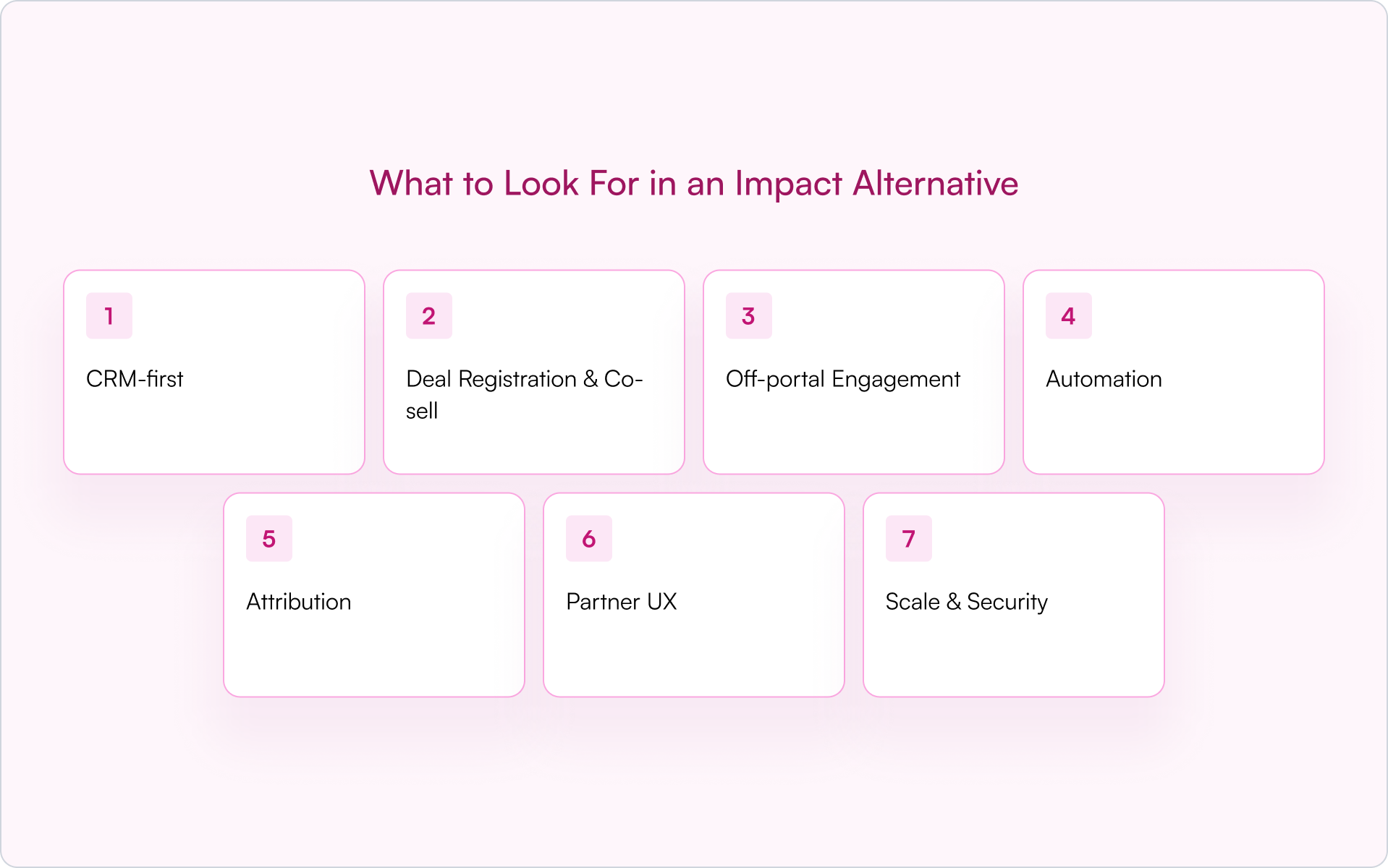
- CRM-first: Look for a PRM that integrates directly with your CRM, so partner records, fields, and reporting live natively in Salesforce or HubSpot.
- Deal Registration & Co-sell: Your new PRM should support seamless deal registration and co-selling by enabling a shared pipeline, mutual action plans, and conflict prevention.
- Off-portal Engagement: Forcing partners to log into a portal every time they need a quick update will put you on a fast track to disengagement. Instead, prioritize a PRM that delivers automated updates and alerts in channels they already use, such as email or Slack.
- Automation: Automation is a must-have in 2026. These tools help you launch and optimize campaigns, onboard partners, engage partners, send activity reminders and prepare for QBRs much more quickly, and with much less manual labour, than in the past.
- Attribution: Make sure your new platform provides clear attribution, from partner engagement through to pipeline and revenue impact.
- Partner UX: Your PRM must deliver a frictionless experience, making the user journey as easy as possible for your partners. Look out for features like a simple submission process, easy access to branded assets, and self-serve tools.
- Scale & Security: As your partnership program grows, you’ll need to be able to easily manage different partner tiers, regions, and types. Choose a PRM with strong security and role-based access controls.
The 15 Best Impact Alternatives for SaaS Partner Programs (2026)
If you’ve been using Impact, but are keen to see what other alternatives could offer you, you’re in the right place.
Here’s our pick of the 15 best Impact alternatives on the market in 2026.
1) Introw

A CRM-first PRM designed for SaaS, Introw is perfect for teams that already use Salesforce or HubSpot, and are running referral, reseller, and/or co-sell programs at scale.
So, why should you choose Introw over Impact?
Introw is purpose-built for channel partnerships — with CRM-native, partner-first workflows that streamline co-selling and co-marketing across your ecosystem.
It embeds deal registration, co-sell updates, and engagement tracking directly inside your CRM, while off-portal updates via email and Slack keep partners engaged without forcing them to log into another tool.
Key capabilities:
- Campaign management features
- Partner engagement analytics (visits, content usage, opens/clicks)
- Outreach automation including automated deal updates
- White-labeled experiences
- Role-based dashboards
- Integrates with Salesforce, HubSpot, Slack
- Responsive customer support
🚀Ready to take your partner program to the next level? Request an Introw demo here.
2) PartnerStack

Looking to combine affiliate programs, referral marketing, and reseller partners while gaining marketplace reach?
Take a look at PartnerStack.
Unlike Impact, which is primarily affiliate-focused, PartnerStack is built with SaaS go-to-market strategies in mind and extends well beyond affiliate-only use cases.
Please note that PartnerStack is not CRM-native, so advanced co-sell programs may require additional tools.
Key capabilities:
- Partner marketplace
- Payouts
- Referrals/reseller workflows
💡Looking for some great PartnerStack alternatives? Here are some of the best.
3) Kiflo

Kiflo is a PRM that works well for small to mid-market SaaS companies just starting their formal channel or partner programs.
This platform offers a lighter-weight PRM approach compared to Impact, making it easier for companies to launch and manage reseller or referral programs.
However, bear in mind that it has limited enterprise-grade analytics and deep CRM workflows, so it’s much better suited to smaller businesses looking for a simpler solution.
Key capabilities:
- Deal registration
- Incentives
- Enablement basics
➡️ You can see our top Kiflo alternatives here.
4) Channelscaler

Channelscaler offers a full PRM and partner automation stack for companies running channel or partner programs.
It’s perfect for companies looking for modular solutions, but if you’re planning to run a simple program, be careful you don’t end up implementing more modules than you actually need.
How does it compare to Impact? Channelscaler delivers a channel-centric platform with a wider scope, while Impact is an affiliate-first tool.
Key capabilities:
- Deal registration
- Incentive and rebate management
- Content & enablement
- Partner journey automation
- Performance tracking dashboards
5) Impartner

Partner marketing automation platform Impartner caters to enterprises with complex, global channel operations.
Consider this platform if you need a system robust enough to handle multiple regions, tiers, and partner types.
If you’re considering switching from Impact to Impartner, you’ll notice a huge difference: namely, that this solution provides a full-stack PRM built for deep governance and enterprise-grade scale, while Impact has a more narrow focus.
Of course, Impartner’s more complex system comes with a heavier implementation and administrative lift, so it’s vital to ensure your business has the resources to manage it effectively.
Key capabilities:
- Tiering
- MDF
- Workflows
- Robust analytics
6) Unifyr

Unifyr is an all-in-one, AI-enabled PRM and channel growth platform.
It is designed for organizations managing partner ecosystems and aiming to centralize and streamline their operations, particularly in dealing with maturing or enterprise-scale channel programs.
This SaaS platform offers a wider variety of features than Impact, which focuses on performance marketing.
However, this does mean there can be a learning curve and it can be a little heavy for smaller brands, with some advanced features more applicable to mid-size or large companies.
Key capabilities:
- Partner onboarding & activation
- Deal registration & lead management
- Supplier/multi-vendor support
- AI-enabled features
7) Magentrix

Magentrix is made for Salesforce-centric teams that need deeply integrated custom portals.
It’s a good match for teams that require close alignment between their CRM and the partner-facing portal, as well as powerful customization and scalability.
When compared to Impact, it’s worth noting that Magentrix offers deep Salesforce alignment, along with robust community and portal features that go beyond what the other platform provides.
However, since Magentrix is portal-first, it’s important to ensure that partner engagement does not rely solely on logging in.
Key capabilities:
- Resource library
- Case collaboration
- Portal UX
8) Channeltivity
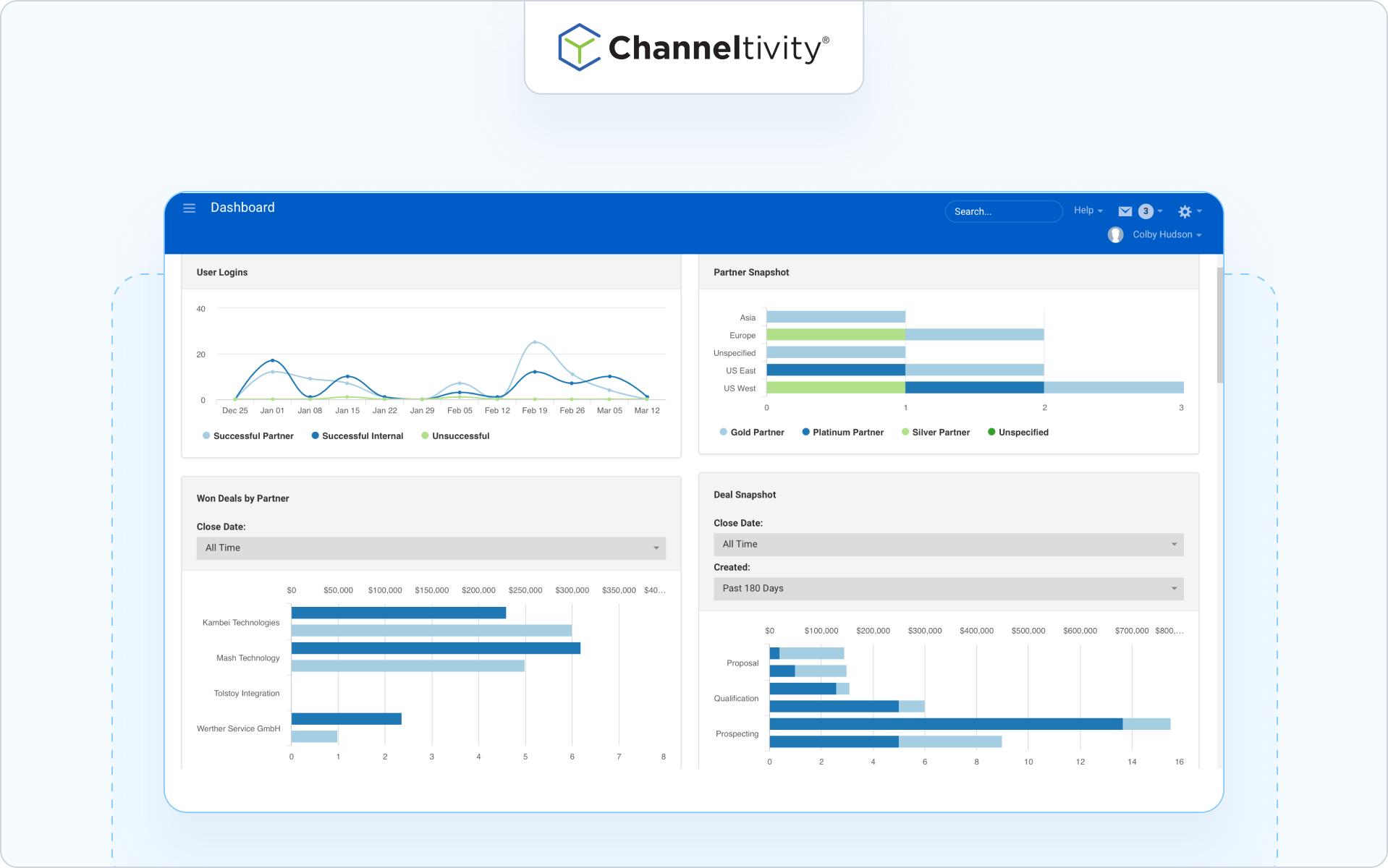
Channeltivity is designed for mid-market SaaS companies that need a comprehensive PRM to effectively manage and scale their channel programs.
This SaaS tool offers a solid foundation for channel operations, while Impact is more focused on affiliate programs.
For example, Channeltivity offers robust features, including deal registration, Market Development Fund management, and detailed reporting.
Just bear in mind that Channeltivity is primarily portal-centric, which could limit off-portal engagement.
Key capabilities:
- Partner onboarding
- Tiering
- Approvals
9) WorkSpan

Are you tasked with managing alliance and co-sell ecosystems?
WorkSpan facilitates collaboration between multiple partners on shared opportunities and joint sales initiatives.
This solution stands out over Impact because it’s built to manage joint pipelines across partners, which helps partners to coordinate sales efforts more effectively than an affiliate-focused platform like Impact.
However, WorkSpan is not a full PRM – it’s typically used alongside a PRM or CRM to enhance partner management.
Key capabilities:
- Co-sell workflows
- Joint planning
- Pipeline tracking
10) Partnerize
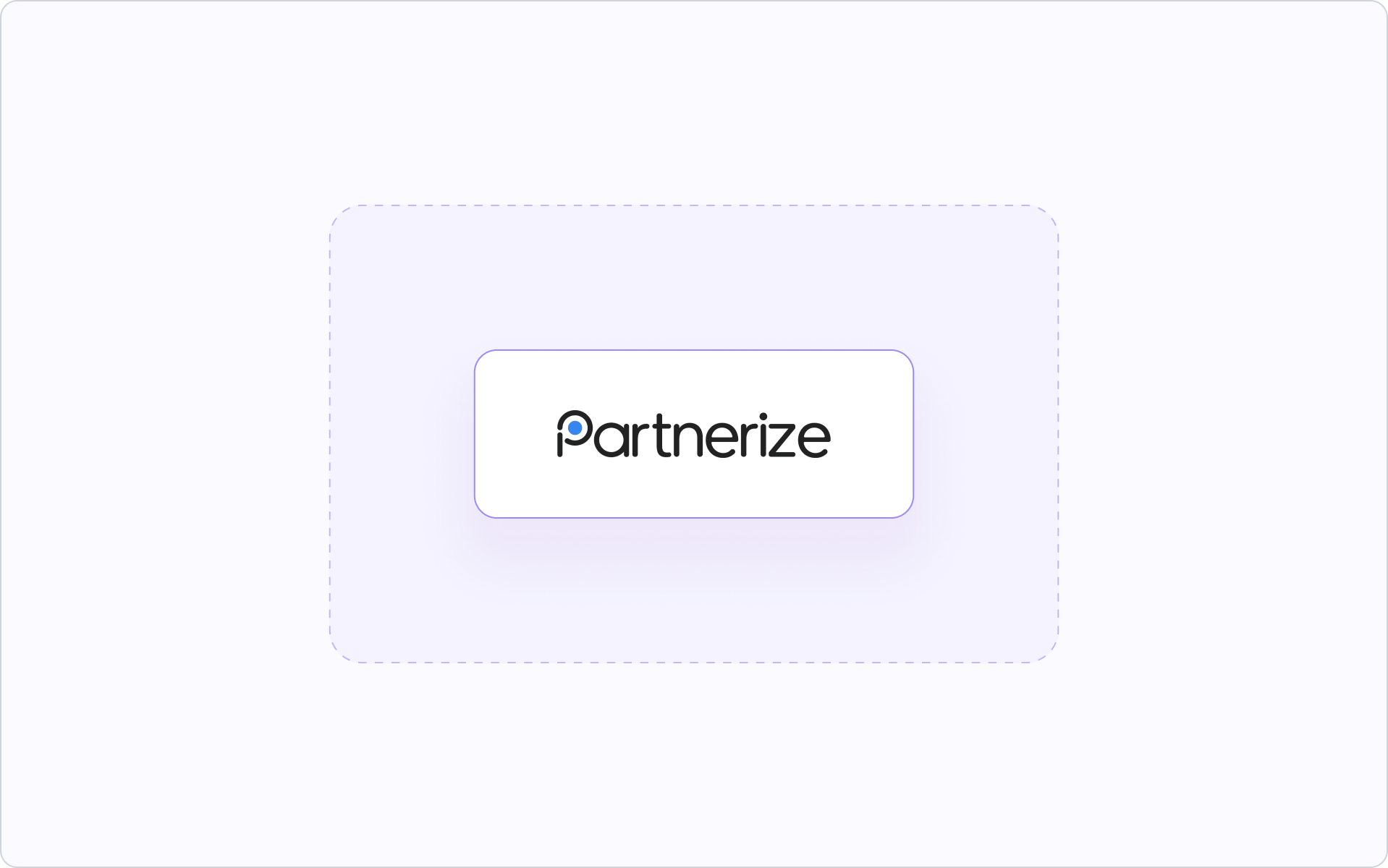
This one has an enterprise focus.
Partnerize provides a single platform for diverse partner types, making it particularly useful for those who manage both affiliate programs and broader partnership initiatives.
This platform supports a much wider range of partner types than Impact and provides robust optimization tools.
However, Partnerize does have a strong e-commerce and affiliate focus.
This means that if you’re looking for a B2B partnership solution, it’s vital to consider whether this platform caters best to your specific requirements.
Key capabilities:
- Contracting
- Payouts
- Advanced analytics features
11) TUNE

TUNE is designed for performance and affiliate marketing teams – especially those focused on mobile and app-based campaigns.
Businesses might pick this platform over Impact because of its flexible tracking capabilities and developer-friendly tools, which offer plenty of customization for technical integrations.
It’s important to note that TUNE is not built for B2B channel or co-sell programs.
This means while the platform might be useful for affiliate-focused retail brands aiming for ecommerce sales, it may not meet the needs of organizations looking to manage complex partner ecosystems beyond performance marketing channels.
Key capabilities:
- Custom tracking
- APIs
- Mobile SDKs
12) Affise

Built with affiliate networks and performance marketing in mind, Affise helps teams to streamline their operations and manage multiple affiliate performance programs efficiently.
While there’s overlap between Affise and Impact, Affise offers a more streamlined approach to affiliate operations and automated affiliate payouts.
Please note that Affise offers limited support for channel co-sell workflows, so it may not be suitable for organizations looking to manage broader B2B partner ecosystems.
Key capabilities:
- Tracking
- Fraud tools
- Program management
13) Everflow
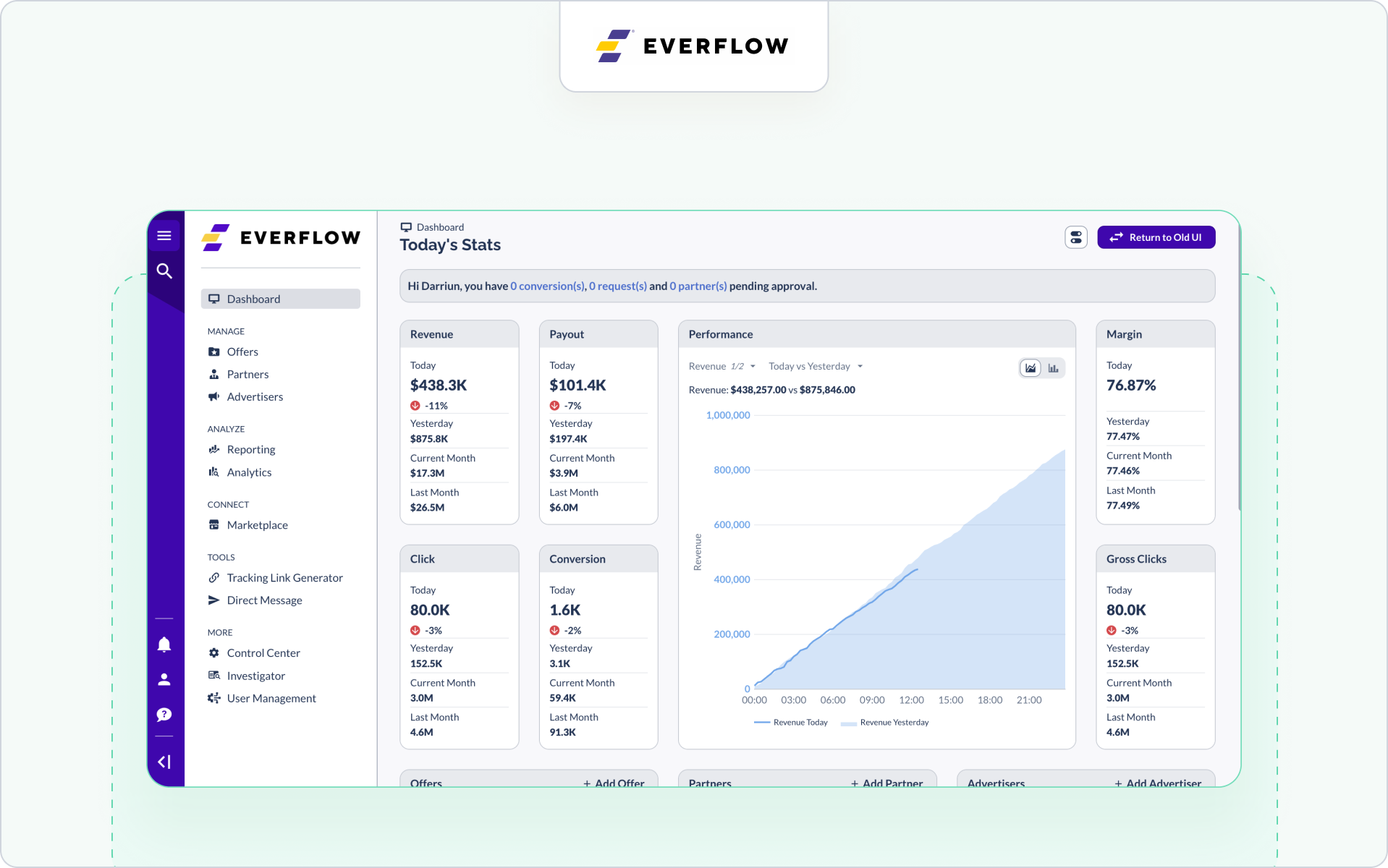
Everflow is designed for performance and affiliate programs, especially those that demand comprehensive analytics and reporting capabilities from their partner marketing platform.
Indeed, this tech offers an alternative tracking stack to Impact, with flexible reporting and detailed analytics.
Keep in mind that Everflow is primarily affiliate-focused and offers limited support for CRM-native channel operations.
So think carefully about whether it’s suitable for complex B2B co-sell programs.
Key capabilities:
- Partner tracking
- Fraud prevention
- APIs
👉Discover some top Everflow alternatives here.
14) Salesforce PRM
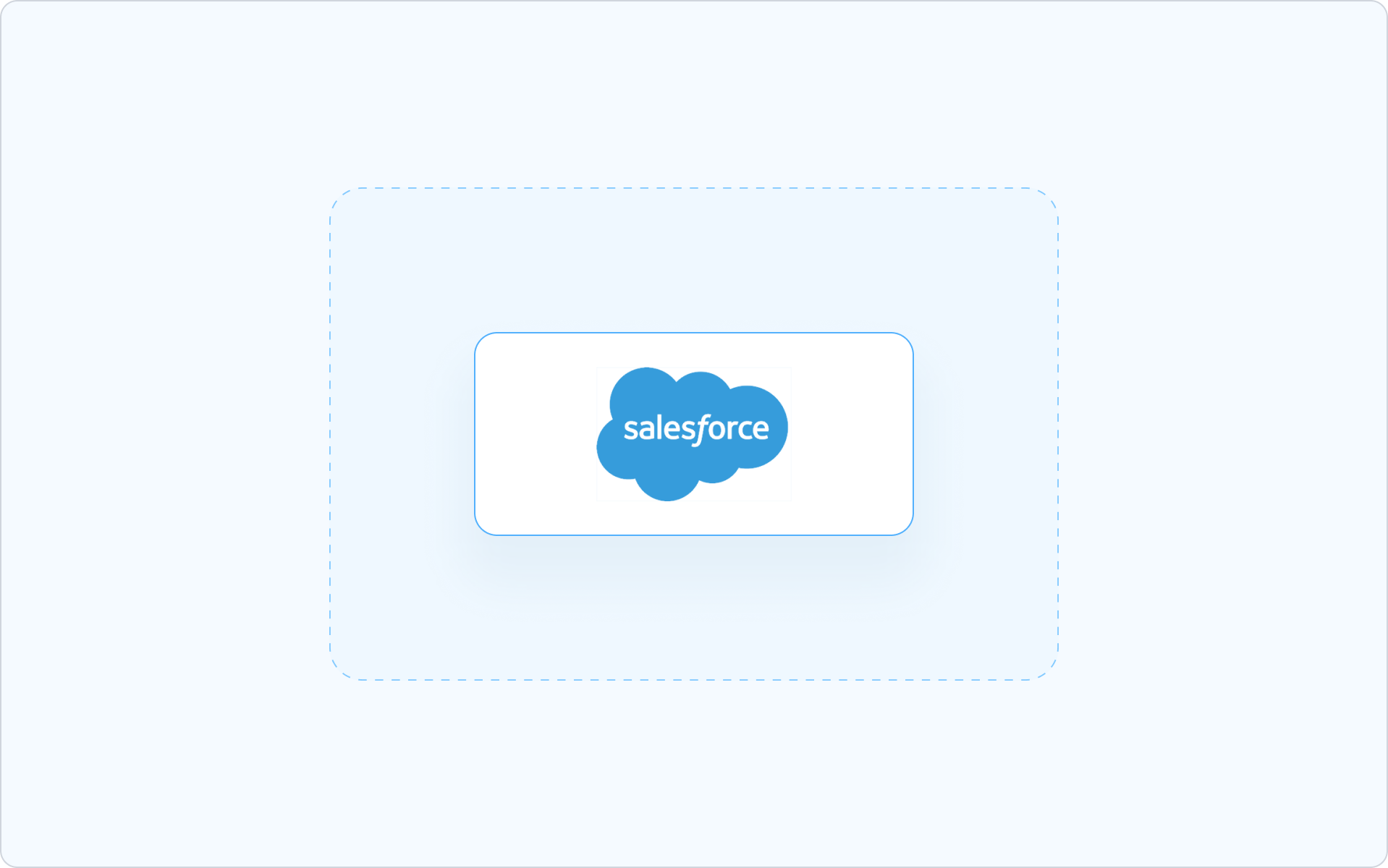
Already work on Salesforce? Opting for Salesforce PRM could make your team’s life a lot easier.
Salesforce PRM is designed for teams that want their partner management fully integrated within their CRM – and it’s a very different solution to Impact.
Indeed, Salesforce PRM offers native Salesforce records, reporting, and extensibility, making it a strong choice for organizations that need a deeply integrated solution rather than an external affiliate-focused platform.
It’s worth noting that the out-of-the-box user experience is pretty basic, so the success of Salesforce PRM often depends on internal resources and technical assistance.
Or, in other words, how well you’re able to customize and optimize the system for your partner programs.
Key features:
- Partner accounts
- Deal reg
- Workflows
15) HubSpot + PRM Add-Ons
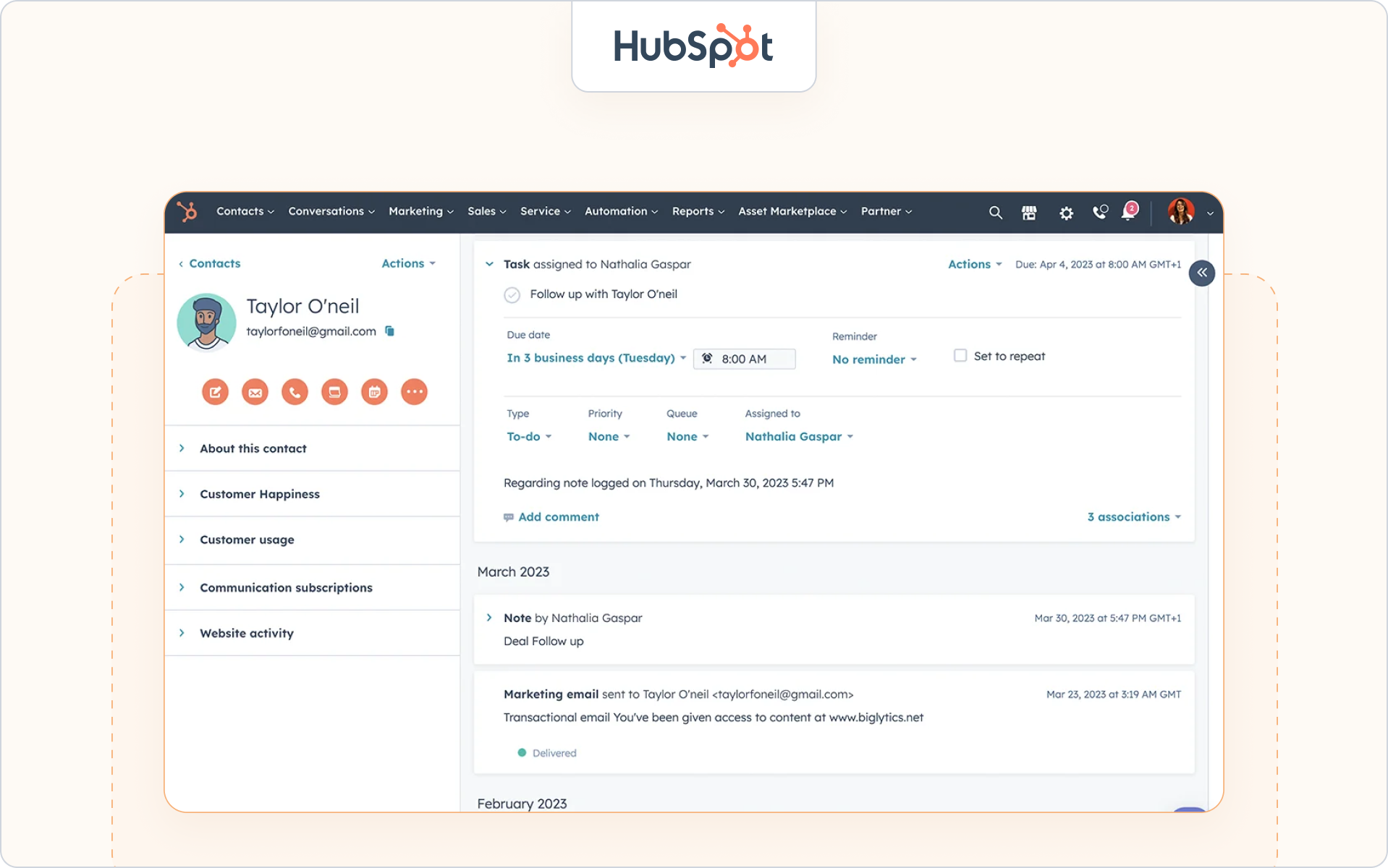
Looking for tailored solutions?
HubSpot-led go-to-market teams may decide to stick with their CRM and invest in some PRM add-ons.
By simply extending their CRM to manage partner programs, these teams can work with CRM-native performance data while selecting the partner extensions that best serve their purposes.
However, there are downsides to this approach.
Indeed, for organizations that need deeper PRM functionality, a dedicated PRM platform like Introw will be required.
HubSpot supports:
- Objects
- Workflows
- Partner tagging
- Reporting
Why SaaS Teams Pick Introw Over Impact
Introw is a very different solution to Impact, but if you’re looking for a PRM that supports SaaS partner management, it’s a powerful alternative.
Here’s why SaaS teams benefit from choosing Introw:
- Channel-first, not affiliate-first: Impact was designed for affiliate management and influencer programs, so its workflows revolve around clicks, payouts, and referral tracking. But Introw is purpose-built for SaaS, making deal registration, co-selling, and partner engagement its core focus.
- CRM-native: With Introw, all partner activity lives directly inside Salesforce or HubSpot, eliminating silos and giving you a single source of truth.
- Off-portal engagement: Many PRMs rely on portals that require logins. This adds friction to the partner journey and limits engagement. Introw meets partners where they work (such as email or Slack) for seamless collaboration.
- Automation everywhere: Eliminate tedious administrative tasks with Introw, and spend your time adding genuine value. Introw automates onboarding, campaign management, nudges, and even QBR prep.
- Attribution you can trust: Affiliate-first tools typically track clicks and last-touch referrals, which don’t accurately reflect the influence of SaaS partners. Introw ties content usage, notifications, and partner activity directly to pipeline and revenue for attribution you can feel confident in.
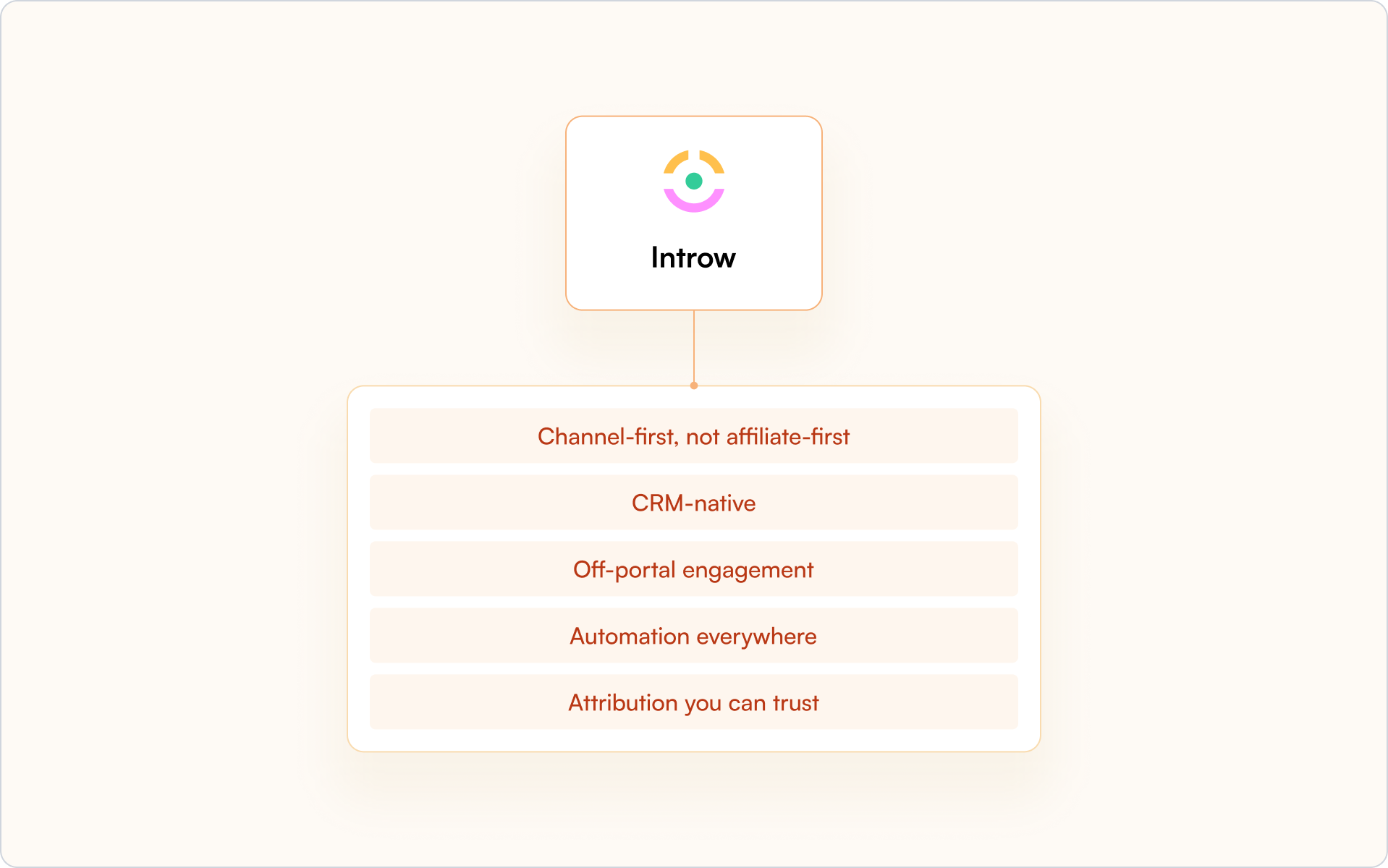
📣 Want to see Introw in action? Request a demo here.
Conclusion
Is it time to seek alternatives to Impact?
You’ll know when you’ve found the right Impact alternative for B2B SaaS, because it will improve co-selling, engagement, and attribution directly in your CRM.
When shopping around for Impact.com alternatives, take a step back to review how your current partner program works.
Consider whether your channel strategy is as effective as you’d like it to be, and identify any gaps.
Then:
1️⃣ Shortlist CRM-first PRMs
2️⃣ Run a live pilot
3️⃣ Choose the platform your partners actually respond to
👉 See how Introw can power your partner program – book a demo today.
Channel Partner Marketing Guide 2026: Strategies and Tactics
What would change if every partner campaign were easy to launch, easy to join, and easy to measure?
Most teams still juggle scattered content and manual follow-ups, which slows down even the best channel partner marketing programs.
A focused channel partner marketing strategy removes that friction by meeting partners where they work, using repeatable assets, and keeping everything aligned in your CRM.
With CRM-native tools like Introw, partner channel marketing programs become easier to run and easier for partners to engage with across both to-partner and through-partner motions.
If predictable revenue is the goal, clarity and automation are the starting point.
So what does channel partner marketing actually mean in 2026?
What is channel partner marketing? (SaaS 2026 definition)
Channel partner marketing is the work you do with and for partners to create demand, drive adoption, and grow revenue together.
In 2026, it’s a mix of to-partner enablement and through-partner campaigns, all tied back to your CRM so nothing gets lost in the shuffle.
To-partner vs through-partner
Here’s the quick way to think about the two motions:
Most strong partner programs run both motions at the same time.
Channel marketing vs partner marketing
People use these terms interchangeably, but they’re not the same.
- Channel marketing is your route-to-market strategy
- Partner marketing is the actual programs and campaigns you run with partners
Your channel partner marketing strategy sits right in the middle of the two.
Who counts as a channel partner?
A channel partner can be a reseller, referral partner, MSP, SI, tech integration partner, agency, or consultant.
Each one brings different strengths and sits at a different stage of the channel partner marketing journey, which is why segmentation early on matters so much.
Why this definition matters
To run channel partner marketing activities that move pipeline, you need clarity about who you’re enabling and what you expect from them.
When everyone shares the same definition, partner managers and RevOps can set goals and measure success directly in Salesforce or HubSpot.
A shared foundation makes your channel partner marketing plan easier to build and scale. Everything else in this guide builds on that framework.
The 4-part framework: Plan → Enable → Run → Measure
Every strong channel partner marketing strategy follows the same rhythm.
These four stages help you plan campaigns partners actually want to use, run consistent through-partner plays, and measure every result directly in Salesforce or HubSpot.
Think of this as the backbone of your entire channel partner marketing journey.
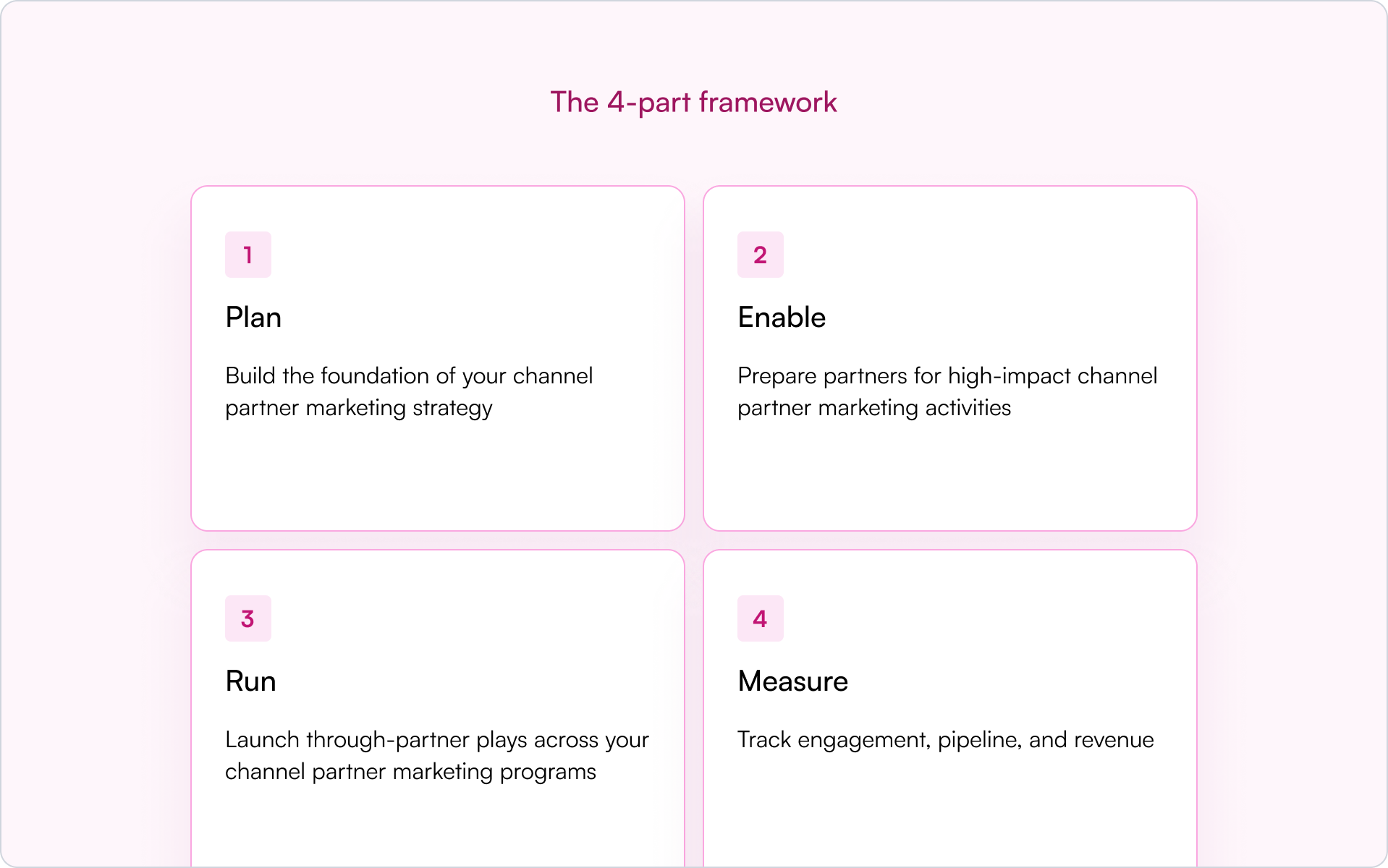
Plan: Build the foundation of your channel partner marketing strategy
Before you launch a partner campaign, you need a quick, clear plan that keeps everyone aligned
This stage shapes the full channel partner marketing journey. It also gives partner managers and RevOps the structure they need to measure outcomes in the CRM.
What to define
- Your partner ICP for each segment in your channel partner marketing programs
- A clear offer for referral, reseller, SI, MSP, or tech partners
- Goals tied to registered deals, qualified intros, and pipeline
- Quarterly focus areas that support your wider channel partner go-to-market strategy
- MDF guidelines and how they connect to channel partner marketing activities
- A campaign calendar with repeatable moments partners can rely on
Why it matters
This is one of the simplest channel partner marketing best practices to get right. If the plan is unclear, partners won’t know how to participate, and your channel partner marketing plan becomes harder to scale.
Example
A strong plan might segment partners by type and region, then map one or two through-partner plays to each group so marketing and partner teams stay aligned.
For a deeper starting point, the How to build a channel partner program guide is a helpful reference.
Enable: Prepare partners for high-impact channel partner marketing activities
Enablement is where your strategy becomes real for partners. When partners know what to say, what to share, and how the campaign works, execution gets a lot easier.
What to provide
- Campaign-in-a-box kits
- Talk tracks and positioning
- Onboarding materials that match each channel partner marketing segment
- Localizable content and co-brandable assets
- Email and social templates that reduce friction
- Clear instructions for through-partner execution
Why it matters
Enablement is the moment partners decide whether they will actually run your campaign. If assets are simple and accessible, your channel partner marketing programs instantly become more repeatable.
Example
A partner might open a kit, grab the email sequence, and start outreach the same day. This is the kind of activation every channel partner marketing plan aims for.
For more ideas, the partnership marketing guide offers helpful examples.
Run: Launch through-partner plays across your channel partner marketing programs
This stage turns planning into real execution. Through-partner campaigns should feel easy for partners and easy for your internal teams to manage.
What execution looks like
- Multi-channel campaigns that match each partner’s motion
- Off-portal updates through email or Slack so partners never need extra logins
- Automated reminders for deadlines, events, and asset usage
- Co-selling handoff steps that roll directly into Salesforce or HubSpot
Why it matters
If execution feels heavy, your partner channel marketing efforts slow down fast. When updates and communication run off-portal, channel partner marketing activities scale without manual follow-ups.
Example
A partner might receive a Slack update about a new campaign and start promoting it without ever logging into a portal. This keeps momentum high and adoption consistent.
Measure: Track engagement, pipeline, and revenue
Measurement is what turns channel partner marketing strategy into a predictable engine. It removes guesswork and shows exactly which partners and campaigns drive revenue.
What to track
- Engagement with assets and campaign kits
- Deal registration volume and influenced pipeline
- Co-selling activity tied to partner channel marketing plays
- Activation rates across each segment
- Conversion rates and influenced ARR
- Examples of channel partner marketing impact across the quarter
How Introw supports this
With Introw, every partner email click, asset download, deal update, and campaign touchpoint syncs directly into Salesforce or HubSpot.
RevOps, partner managers, and CROs get clear dashboards that tie channel partner marketing activities to pipeline and revenue. No portals, no manual reporting.
10 proven partner marketing plays for 2026
These plays help your partner program stay consistent without overloading your marketing team or your partners.
Each one can fit neatly into your channel partner marketing strategy and can support both lead generation and revenue growth.
Feel free to treat this list as a starting point and choose the plays that match your channel partnerships best.
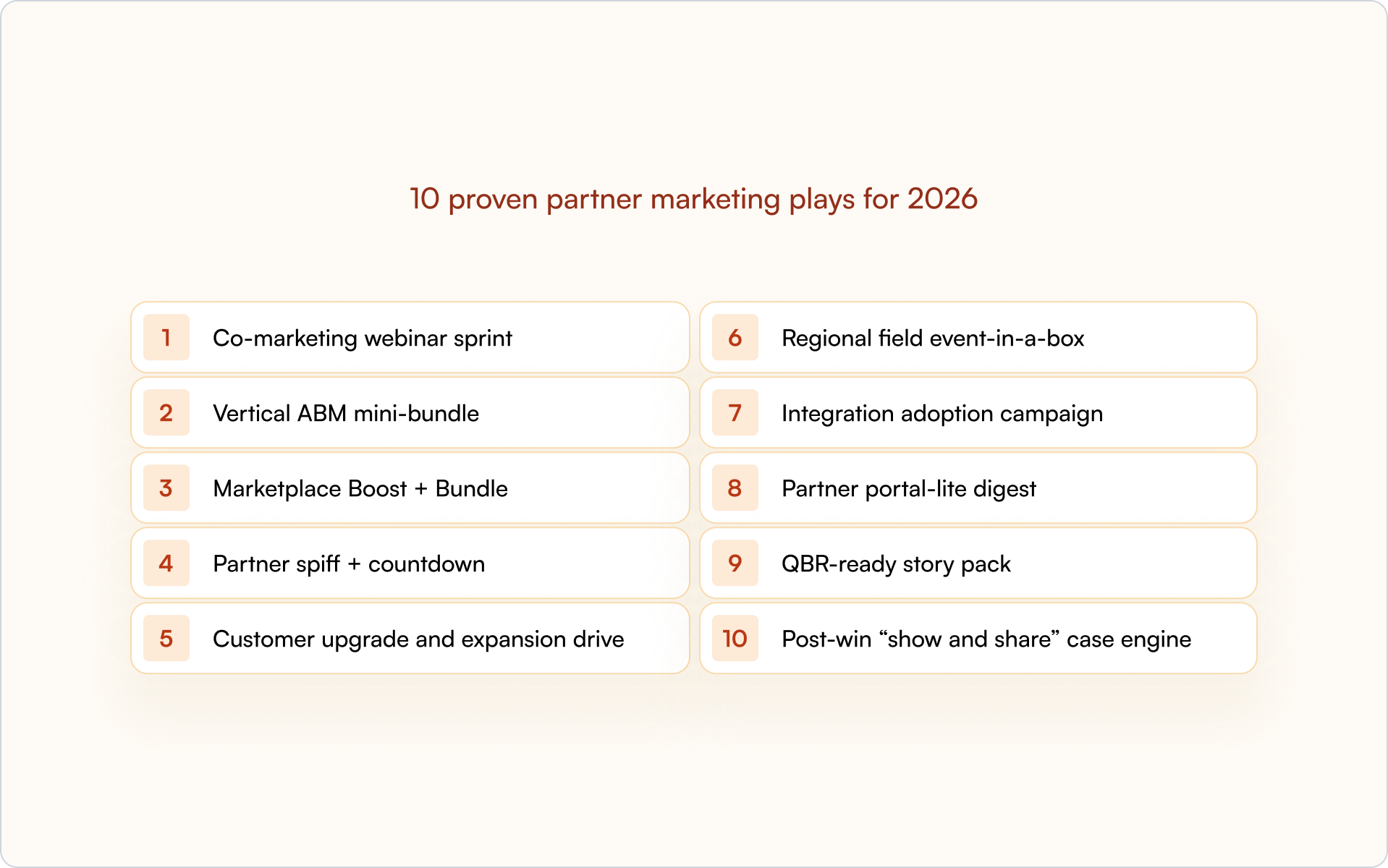
1. Co-marketing webinar sprint
What it is: A short, focused webinar campaign partners can run with you.
Why it works: Partners bring warm audiences, and your sales team gets qualified conversations.
How to launch: Pick a joint topic, share your campaign in a box, run a promo for two weeks, then follow up on attendees.
KPI: Registrations, attendance, meetings booked.
Introw tip: Automated announcements and attendance tracking show which partners amplify the campaign most.
2. Vertical ABM mini-bundle
What it is: A ready-made industry-specific bundle partners can use for targeted outreach.
Why it works: Vertical relevance increases conversion and helps partners tailor messaging.
How to launch: Give partners a landing page, case study, and email set for one key vertical.
KPI: Meetings booked in in-segment accounts.
Introw tip: Segment partners by vertical and schedule updates that match their territory.
3. Marketplace Boost + Bundle
What it is: A small campaign that refreshes your marketplace listing and gives partners a bundled offer to promote.
Why it works: Marketplaces are high-intent surfaces that help boost sales.
How to launch: Update your listing, share a co-branded bundle, and offer promotional copy partners can use.
KPI: Listing traffic, trials, influenced opportunities.
Introw tip: Track which partners use your marketing materials and which bundles drive activity.
4. Partner spiff + countdown
What it is: A short, incentive-based push for intros or registered deals.
Why it works: Deadlines create energy inside your partner ecosystem.
How to launch: Set a timeline, define a reward, and share daily reminders.
KPI: Registered deals, pipeline created.
Introw tip: Automated countdown nudges keep partners engaged without your team chasing updates.
5. Customer upgrade and expansion drive
What it is: A simple play where partners help existing customers adopt more features or expand usage.
Why it works: Partners already know shared accounts and can influence timing.
How to launch: Give partners an expansion playbook and match them with eligible accounts.
KPI: Expansion opportunities and ARR added.
Introw tip: Signals inside the CRM can trigger partner notifications with no manual work.
6. Regional field event-in-a-box
What it is: A small local event your partner can run with your support.
Why it works: In-person time improves partner engagement and helps your sales team move deals forward.
How to launch: Share a checklist, invite templates, and quick follow-up scripts.
KPI: Show rate, meetings booked after the event.
Introw tip: Use RSVPs and automated follow-ups to keep the momentum strong.
7. Integration adoption campaign
What it is: A targeted push promoting a shared integration.
Why it works: Integration usage is strongly tied to retention and expansion.
How to launch: Give partners “why this matters” messaging, in-product prompts, and ready-to-send emails.
KPI: Integration activations and related opportunities.
Introw tip: Track activation-related content usage to see which partners drive adoption.
8. Partner portal-lite digest
What it is: A monthly Slack or email roundup instead of a traditional partner portal experience.
Why it works: Partners stay informed without logging into another tool.
How to launch: Send a simple digest with top assets, deadlines, wins, and next steps.
KPI: Engagement score, reactivation of dormant partners.
Introw tip: Announcements show exactly which partners interact with each update.
9. QBR-ready story pack
What it is: A lightweight deck partners can use to plan next-quarter actions.
Why it works: Partners see their wins clearly and agree on priorities faster.
How to launch: Share a short deck with highlights, content performance, and next steps.
KPI: Quarterly commitment and pipeline alignment.
Introw tip: CRM-powered story packs help your marketing team and partner managers prep in minutes.
10. Post-win “show and share” case engine
What it is: A quick process for turning partner wins into case snippets.
Why it works: Proof points help partners sell more confidently.
How to launch: Offer a simple template and share the stories across your channel partnerships.
KPI: Case assets created, influenced pipeline lift.
Introw tip: Track downstream clicks to see which stories support your partner marketing strategy best.
These plays help your partner program focus on campaigns your partners can launch quickly, and your marketing team can measure easily.
Which tools actually support this level of consistency without overwhelming your business?
The tech stack you actually need (and nothing more)
A strong channel partner marketing strategy doesn’t require dozens of marketing tools.
Your marketing team, sales team, and partner managers only need a few systems that help you work with the right partners, support effective channel partner motions, and keep everything tied to your customer journey.
Core tools
- CRM (Salesforce or HubSpot): Your single source of truth for pipeline, attribution, sales qualified leads, and the full sales process.
- PRM and partner management: A CRM-native tool like partner management software keeps deal registration, partner engagement, and channel marketing activity aligned across third-party partners and strategic partnerships.
- Content hub: Stores the marketing materials your marketing department uses for each campaign in a box.
- Webinar or event tool: Helps your team run through-partner plays that fit your target audience.
- Light design tools: Support quick co-branding and save marketing resources when working with external partners.
Why this matters for your partner program
A simple tech stack helps channel partnerships move faster and reduces work for your marketing department.
It keeps your partner marketing strategy aligned and gives your team clear CRM reporting, partner clarity, and more predictable revenue growth.
A simple stack sets the stage. The final step is bringing your strategy together in a way partners can trust and act on.
Over to you: Bring your partner strategy to life
A strong channel partner marketing strategy comes down to clarity, simple campaigns, and tools that make it easy for partners to take action.
Your next steps
- Choose two or three channel partner marketing activities your partners can launch quickly
- Give them a campaign in a box with clear messaging and ready-to-use assets
- Measure engagement and pipeline in your CRM, so you know what to repeat
Ready to run high-performing partner campaigns without chasing updates? Request a demo!
Benefits of Selling SaaS on Cloud Marketplaces (And How Partners Make It Even Better)
You’re shipping a great SaaS product and your sales team keeps running into the same blockers: new vendor onboarding takes months, security reviews stall, and finance wants a cleaner procurement process. Listing on cloud marketplaces fixes a big chunk of that. When your SaaS solution is available via AWS Marketplace or Google Cloud Marketplace, enterprise buyers can use existing contracts and committed spend to purchase in days, not quarters. Below, we unpack the core benefits of selling SaaS on cloud marketplaces, how marketplace transactions actually work, and where partners turn a good motion into a great one.
Why cloud marketplaces matter right now
Enterprise buyers are already in the cloud. Procurement teams prefer buying cloud solutions through the platforms they trust because the vendor risk work is largely done, billing is centralized, and usage rolls into existing financial processes. That means your SaaS product benefits from shorter transaction time, cleaner paperwork, and access to budget buckets like committed spend.
For sellers, the advantages stack up: you tap into the marketplace’s global reach, ride the brand trust of the cloud provider, and remove “new vendor” friction from legal and finance. In most cases, the question isn’t “if” you should list — it’s “when” and “where” to start so you don’t spread product teams too thin.
The five biggest benefits of selling SaaS on cloud marketplaces
Let’s get specific. These are the wins you can count on when SaaS companies list and transact on a marketplace.
- Faster procurement and fewer hurdles
Purchase via the buyer’s existing MSA with AWS or Google; no duplicate vendor onboarding. Security and commercial terms inherit marketplace protections, so the procurement process is simpler, and approvals move quicker.
- Access to committed cloud budgets
Many enterprises must burn down committed spend with the cloud provider. Buying your SaaS applications through the marketplace helps buyers hit those targets, which can be the deciding factor late in a cycle.
- Flexible pricing and deal structures
Public listing with pricing plans (monthly/annual), pay as you go, or bespoke private offers for large deals. This flexibility lets your sales team meet the buyer where they are without new paperwork each time.
- Unified billing and entitlement
Marketplace handles invoicing, collections, taxes, and remittance. Entitlements flow automatically to your system once the marketplace transactions close, reducing manual ops and mistakes with sensitive data.
- Co-sell programs and extra air cover
Marketplaces reward aligned co selling motions. When you work with cloud field reps, they bring intros, help shape procurement strategies, and often unblock tough accounts. That creates net-new buyers and sellers connections you won’t get elsewhere.
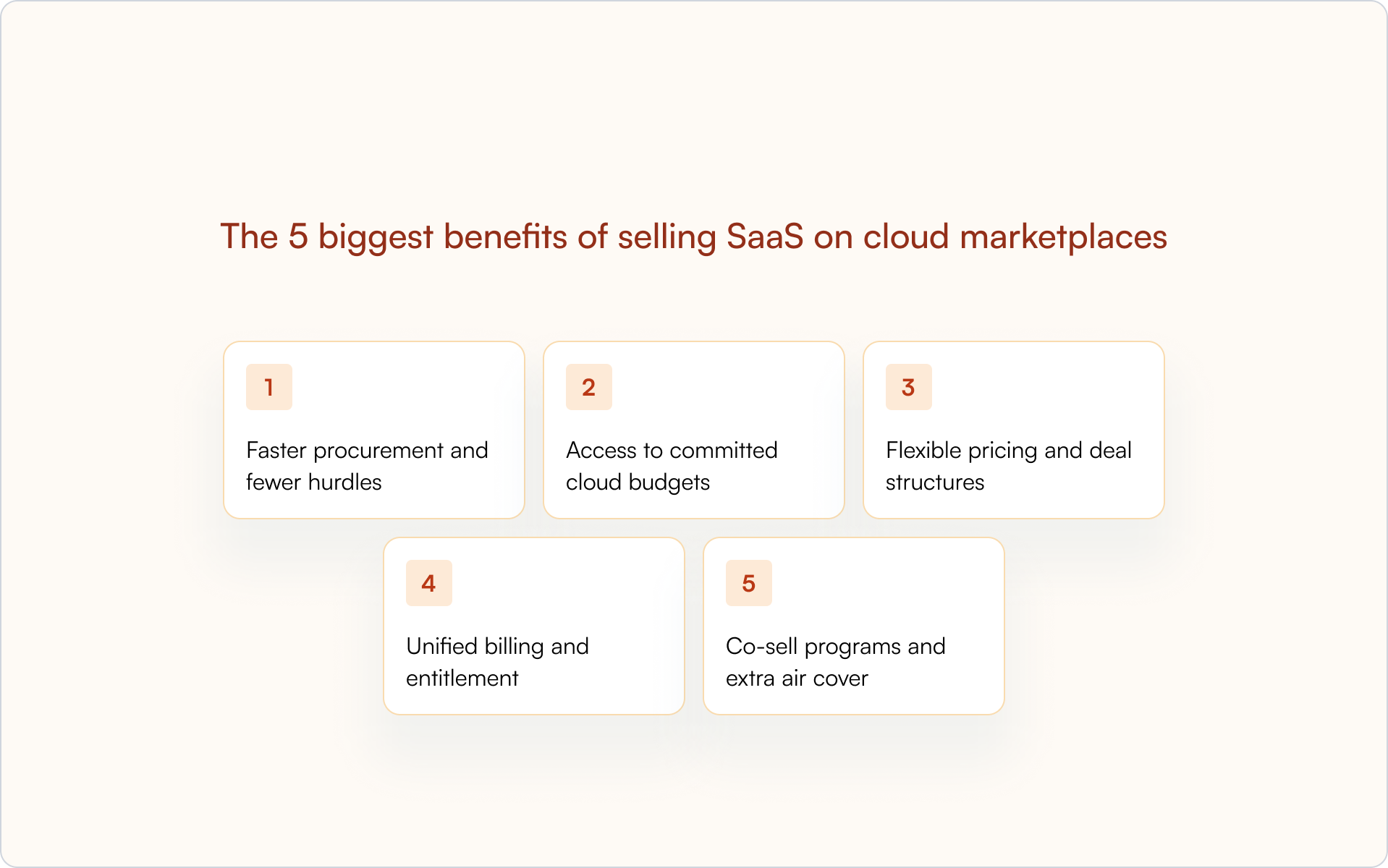
AWS Marketplace vs Google Cloud Marketplace (in practice)
Both platforms deliver the core value, but they feel different in the details:
- AWS Marketplace: deep maturity, broad buyer base, extensive private offers tooling, and robust Vendor Insights for security. Great for ISVs selling into teams already living in AWS services.
- Google Cloud Marketplace: strong if your customers are heavy Google Cloud users or lean into data/AI workloads on GCP. Co-sell alignment with Google field teams can be a force multiplier for marketplace success.
Most companies start with the platform that matches their customer base, then add the second once the operational motion hums.
How marketplace transactions actually work (the short version)
Understanding the flow helps you design a listing that closes smoothly:
- Cloud marketplace listing is created
You publish a concise product page: value prop, supported regions, pricing model, technical overview, and free trials if offered. You also set the fulfillment method (SaaS callbacks, entitlement API, or private offer only).
- Buyer selects a plan and executes
For public pricing, it’s a click-through; for enterprise deals, your rep sends a private offer with negotiated terms. The buyer approves inside their console.
- Billing and entitlement fire
The cloud marketplace invoices the buyer; you receive payouts per their schedule. Your backend gets the entitlement signal (activate, upgrade, cancel) and provisions the account automatically.
- Usage and renewals
If metered, your service reports usage back to the marketplace. Renewals can be automated or handled via new private offers.
The key to cloud marketplace success is keeping this plumbing reliable and your product page crystal clear so buyers and sellers don’t stall on basics.

What to include on your listing (to build trust and conversions)
Think like a skeptical enterprise architect and a busy procurement lead. Your page should answer both in under two minutes.
- Who it’s for: ICP, industries, common use cases.
- What it does: outcome-first description; avoid jargon.
- How it deploys: regions, data residency, identity model, SSO/SCIM.
- Security & compliance: SOC 2/ISO, encryption, links to docs.
- Commercials: pricing plans, pay as you go, free trials, and contact for private offers.
- Proof: named customers, case studies, benchmarks.
- Integration notes: APIs, SDKS, popular connectors.
This is also where you anchor co selling: add a clear “Contact Sales” path for bespoke deals and a “Try Free” button for survey respondents who prefer self-serve.
How partners make marketplaces even better
Listing unlocks speed; partners create scale. Three partner types amplify the motion:
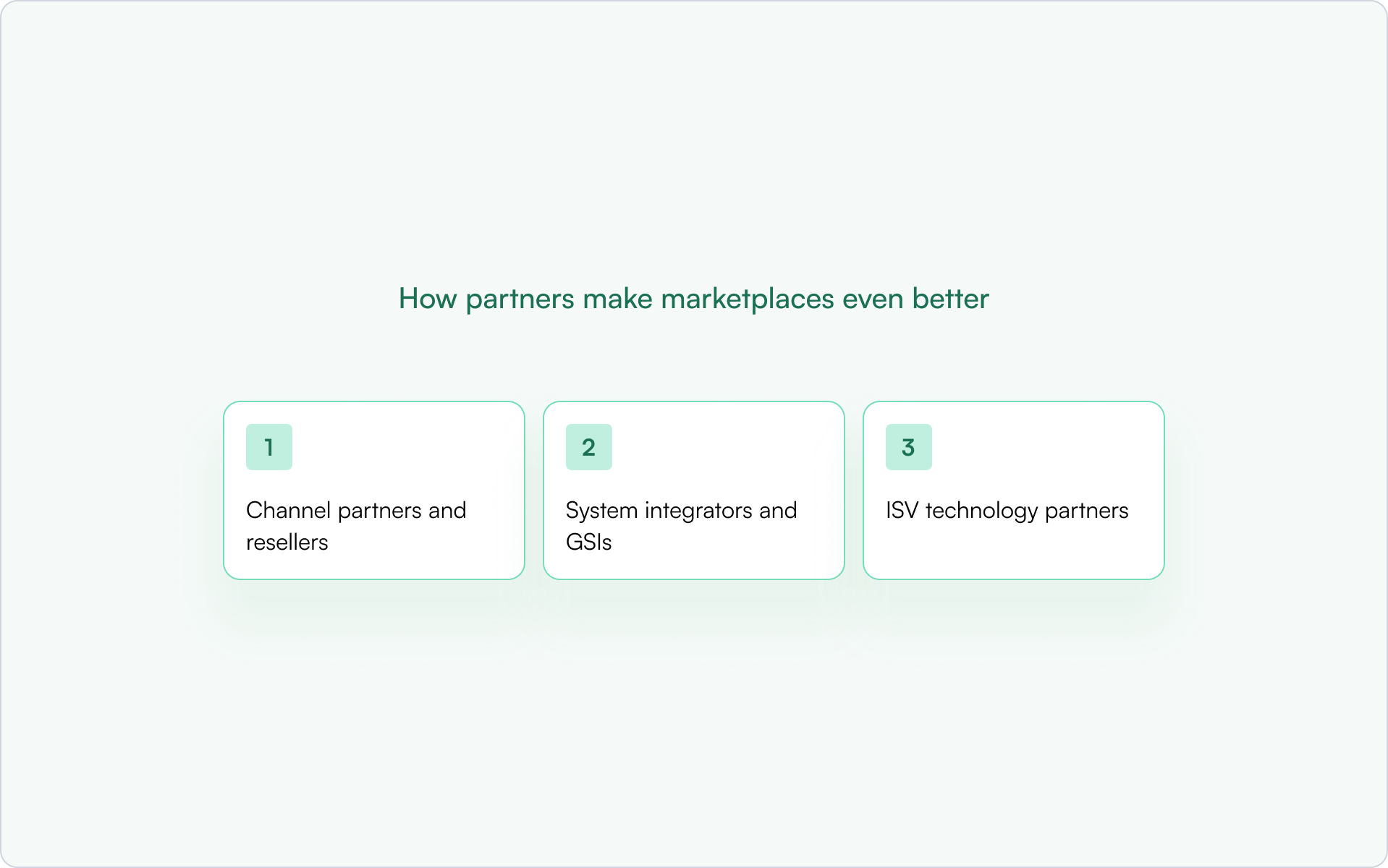
- Channel partners and resellers
They package your SaaS with services or other cloud solutions, route the purchase through the marketplace, and manage customer onboarding. Because they already handle compliance, they can move deals through vendor onboarding faster than you can alone.
- System integrators and GSIs
They design the business case, run pilots, and own rollout and change management. In enterprise accounts, the SI’s advocacy often determines whether an evaluation becomes a marketplace purchase.
- ISV technology partners
They turn your offer into part of a solution — especially for data, security, or observability. These integrations lift win rate and reduce churn because the SaaS offer fits the buyer’s stack from day one.
When you track partner engagement inside CRM and map it to the marketplace opportunity, the value is obvious: shorter cycles, larger ACVs, and higher expansion.
A pragmatic launch plan (without burning your team out)
You can ship a credible first listing in 8–12 weeks if you stay focused:
- Pick one marketplace that matches your customers.
- Choose the initial pricing model (simple subscription or pay-go) and add private offers later.
- Wire entitlement and billing callbacks; keep the technical surface small to start.
- Publish the trust signals (security, compliance, data flow).
- Train the sales team on how marketplace transactions work and how to ask about committed spend.
- Add a short free trial only if it mirrors your product-led experience — otherwise route to a public offer with a clear demo path.
- Stand up a partner brief so channel partners and SIs know how to transact your product and what services to add.
As you learn, expand pricing plans, launch co selling plays with the cloud field, and layer in a second marketplace.
What to watch after you go live (signals that matter)
Skip vanity stats and track the metrics that prove revenue impact:
- Marketplace-sourced pipeline and win rate
- Days from intro to executed marketplace listing purchase (vs direct)
- Share of deals using private offers
- Percentage of bookings tied to committed spend
- Time to provision and first value after entitlement
- Attach rate with partners (SI involvement, reseller influence)
- Renewal rate and expansion from marketplace cohorts
If cycles aren’t shrinking, tighten your listing, simplify commercial options, and make the “how to buy” path obvious. If attach rates lag, recruit services partners with clear plays and co-market together.
Where Introw fits
Marketplaces move fast; partner motions can lag if they’re stuck in spreadsheets. Introw keeps your partner GTM CRM-first: deal and lead registration for marketplace opportunities, co-sell tracking with field teams, and clean workflows for SIs, resellers, and ISV integrations. You’ll see exactly which partners helped drive revenue, which co selling plays convert, and where to double down. When you’re ready to turn marketplace momentum into a repeatable partner engine, Introw shows the path in Salesforce or HubSpot — no extra portals required.
Ready to accelerate marketplace deals and scale with partners? Request an Introw demo.


.svg)




















